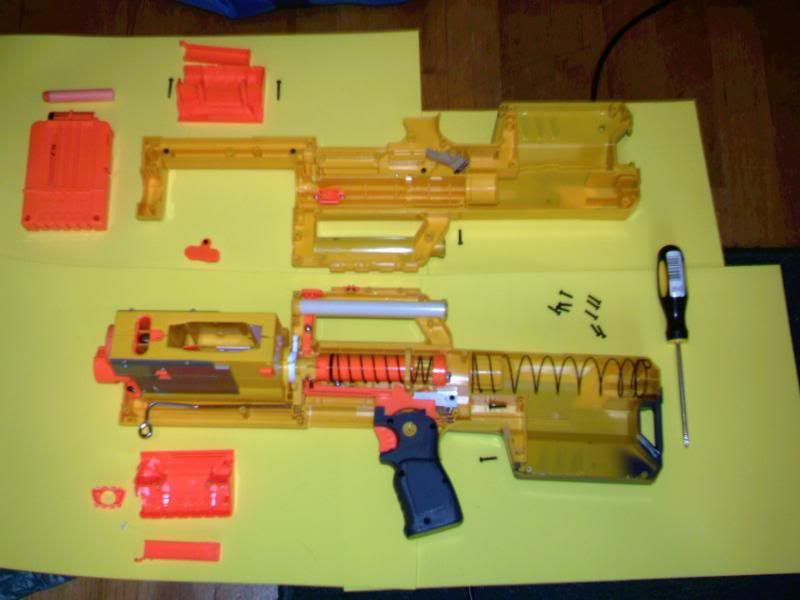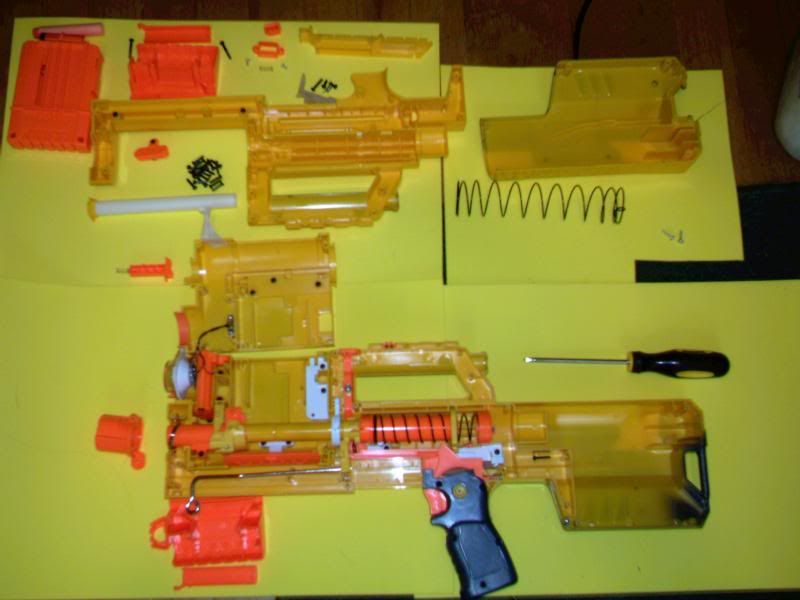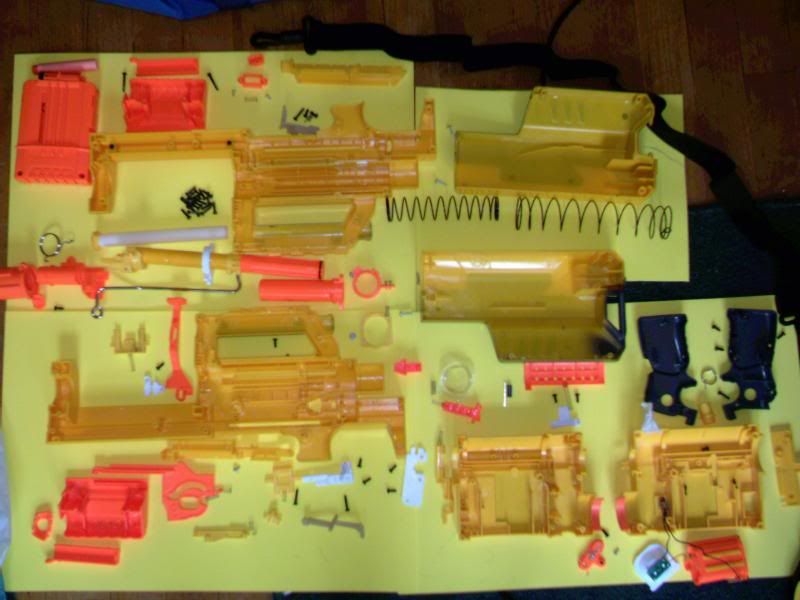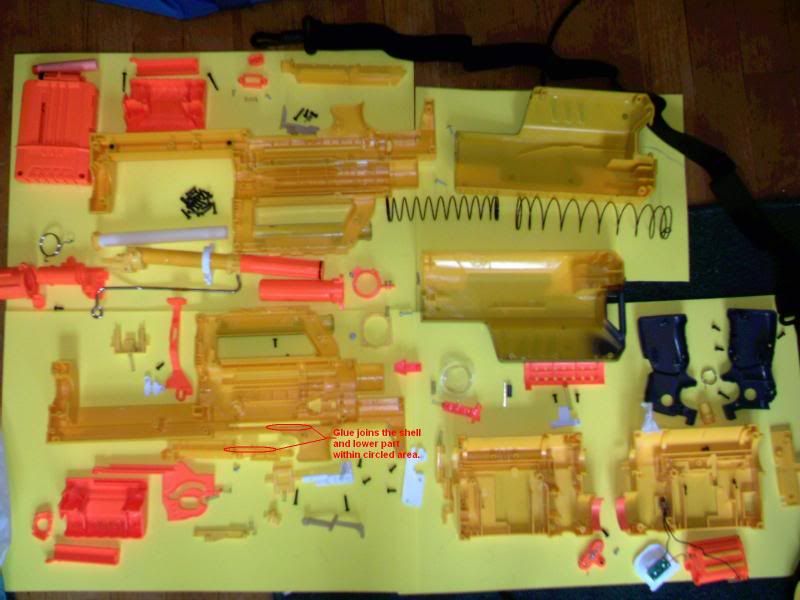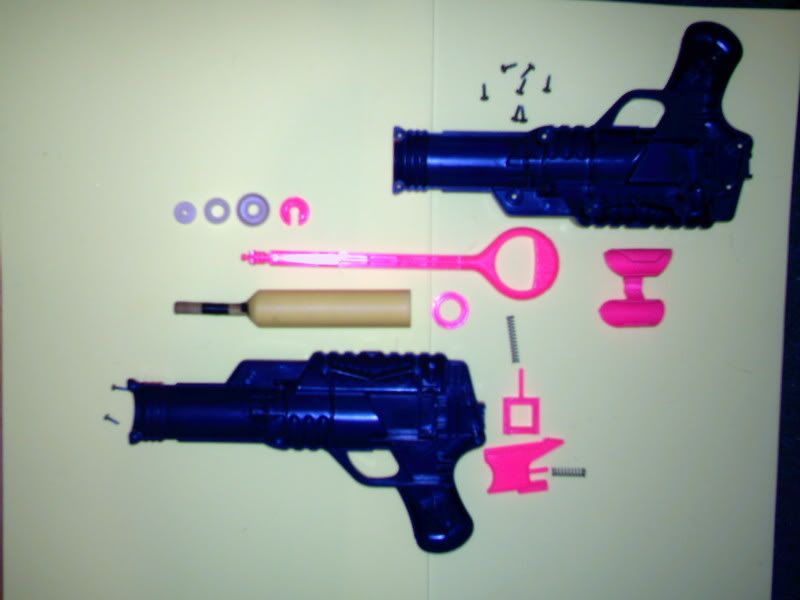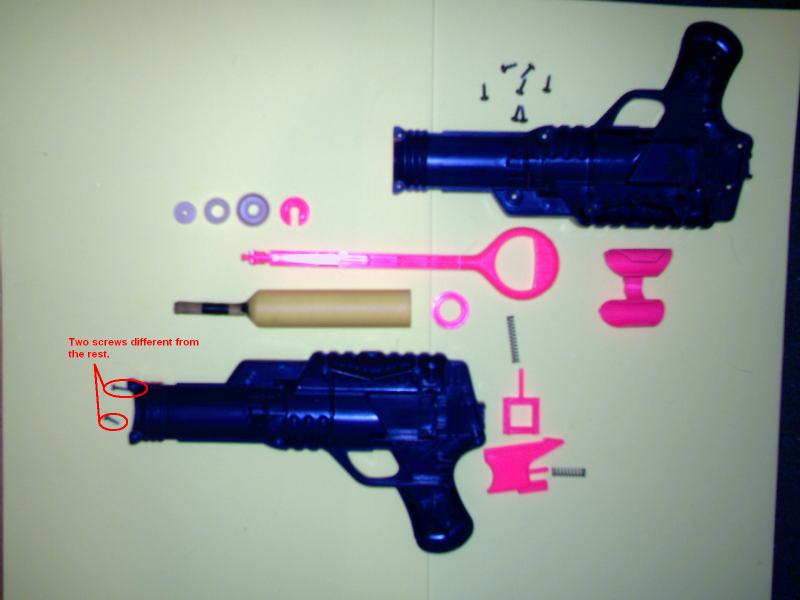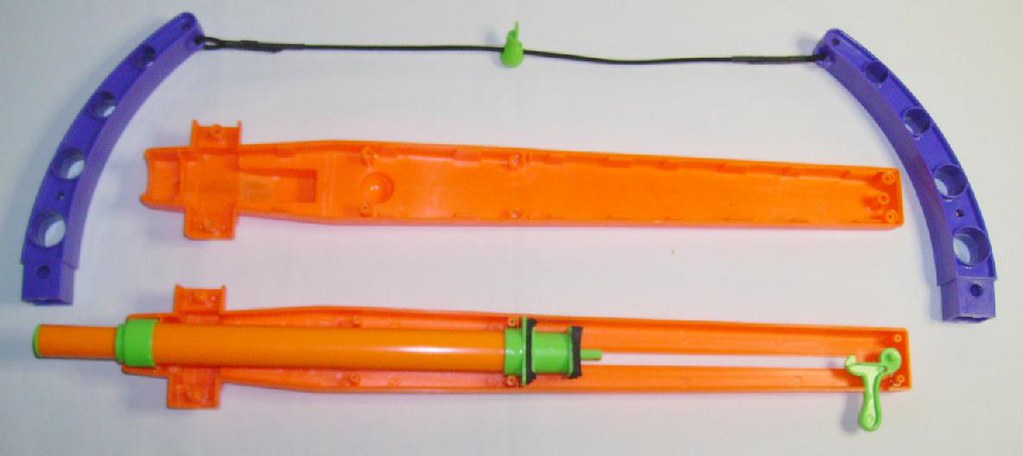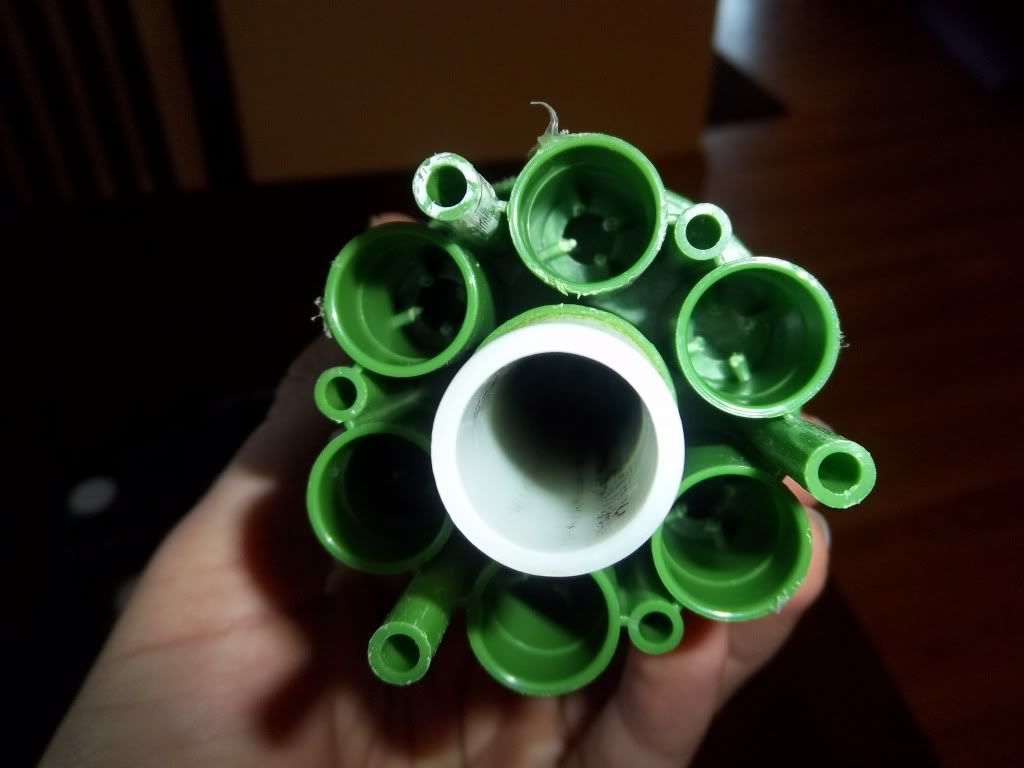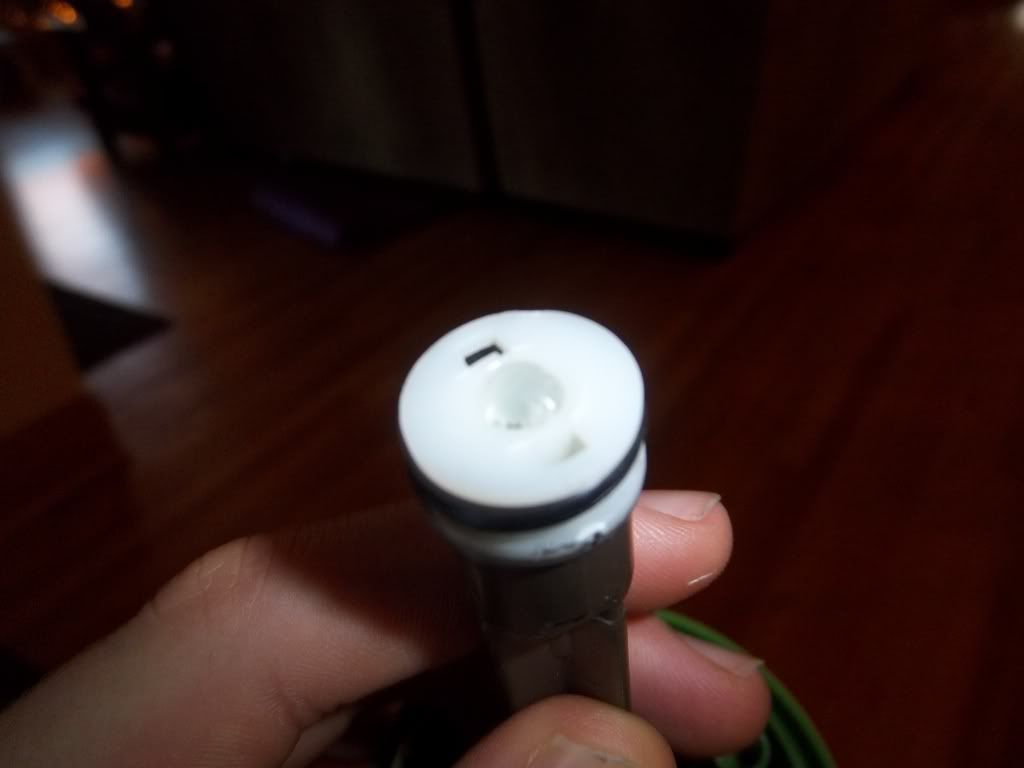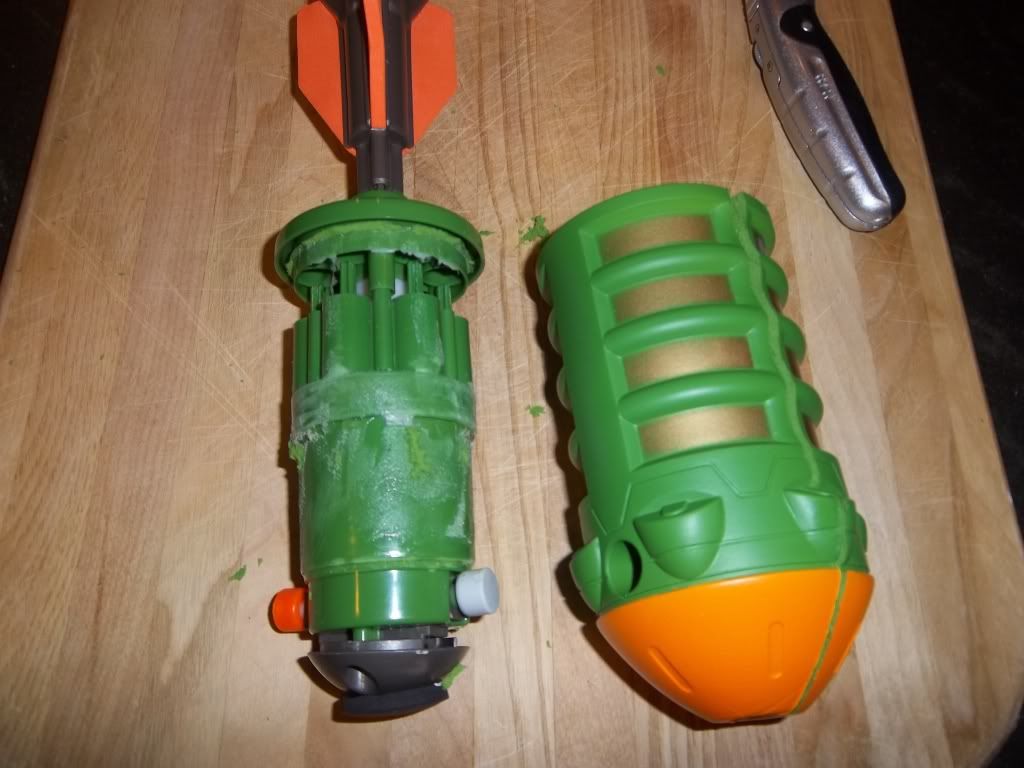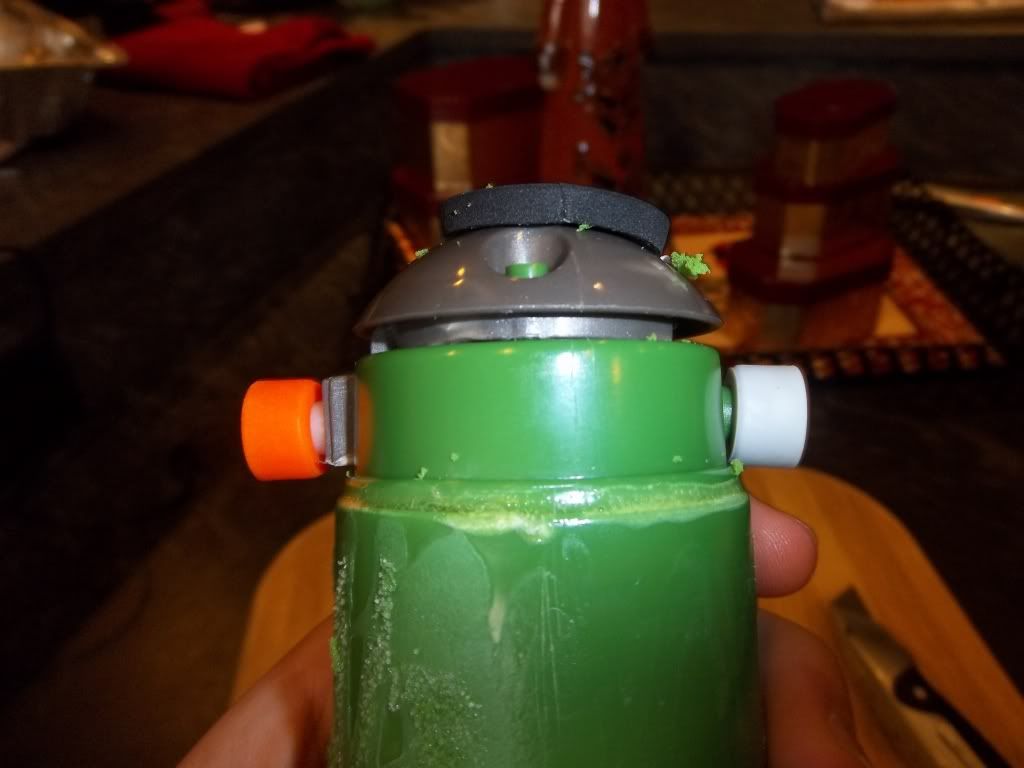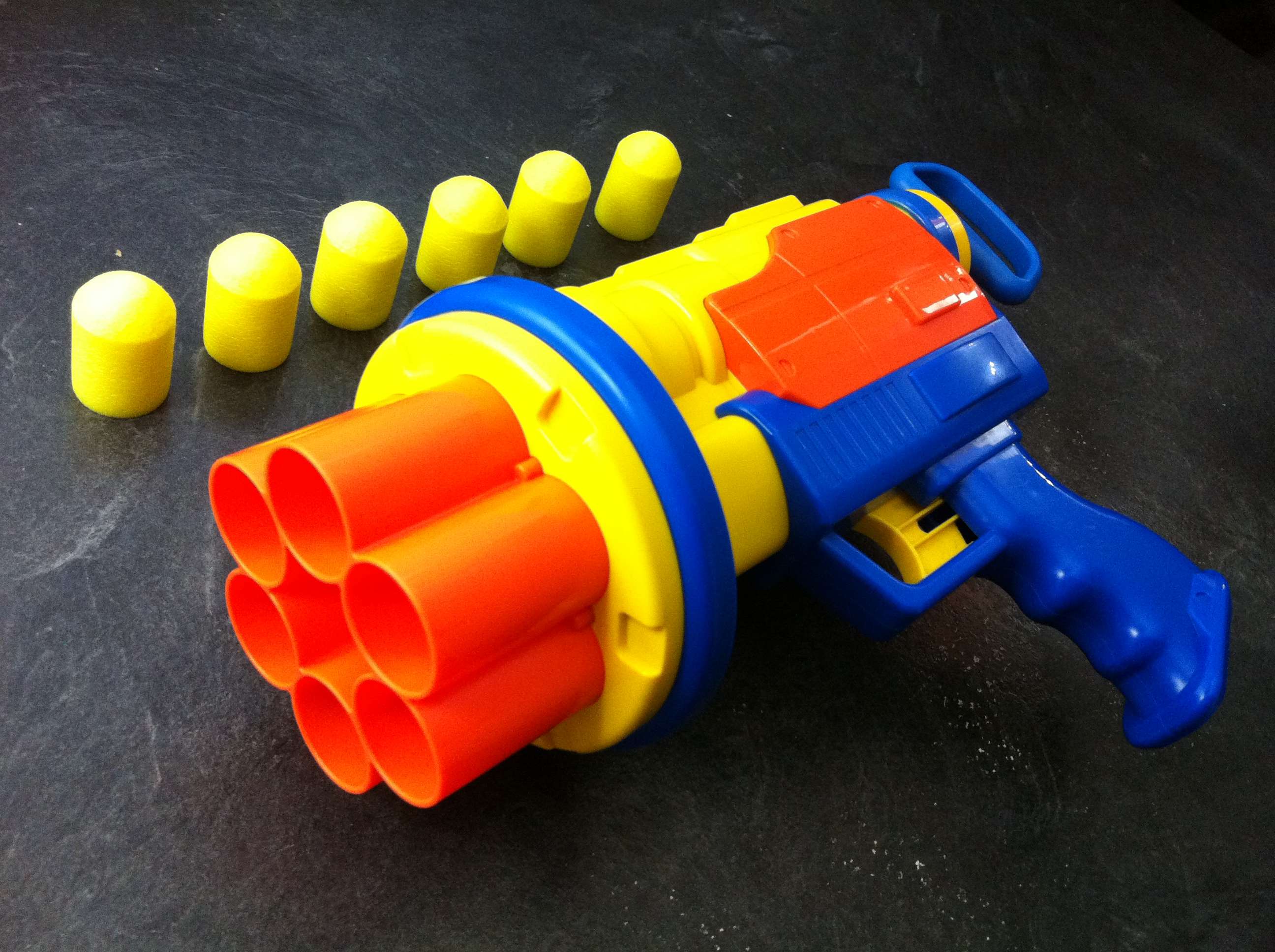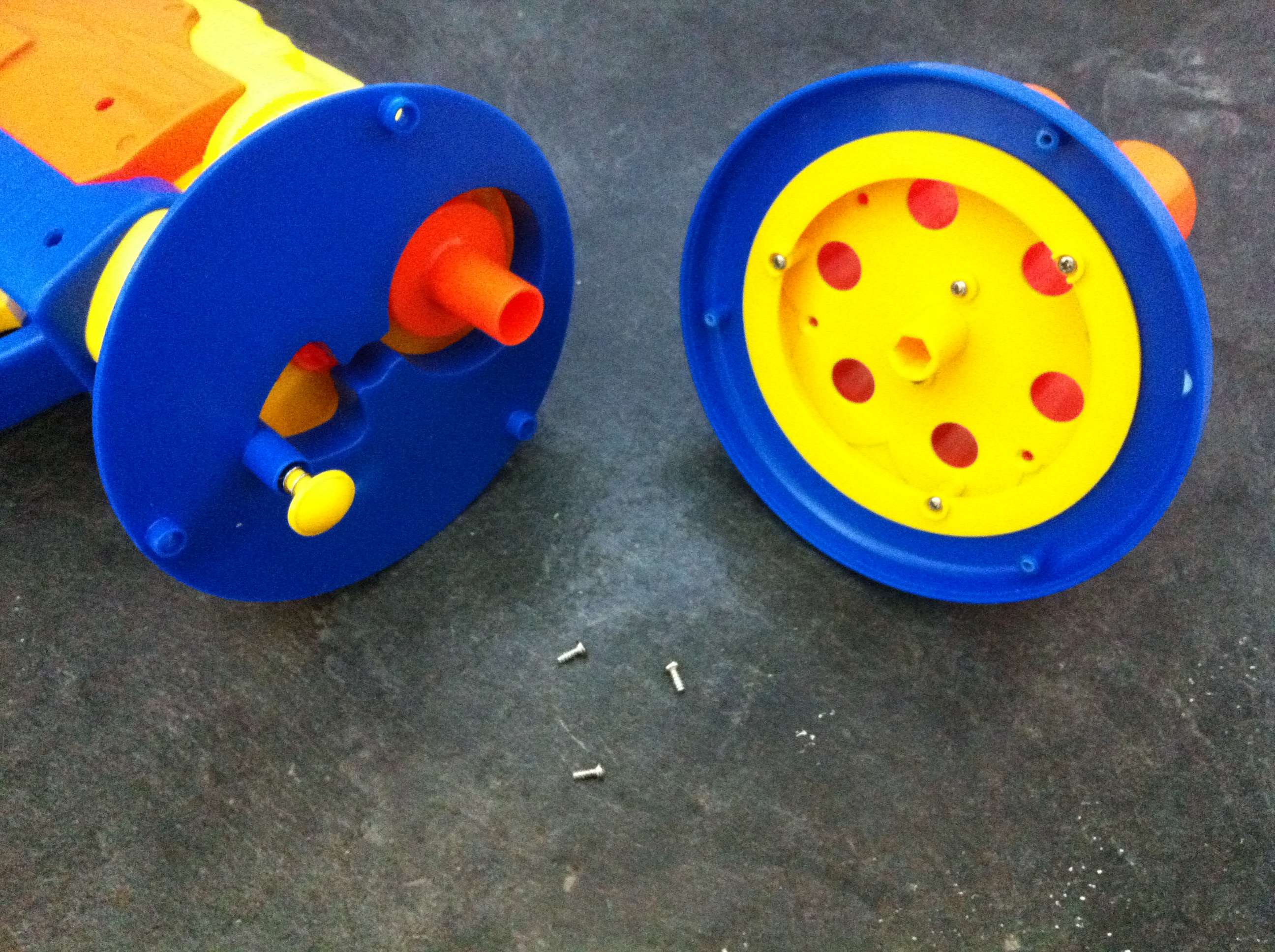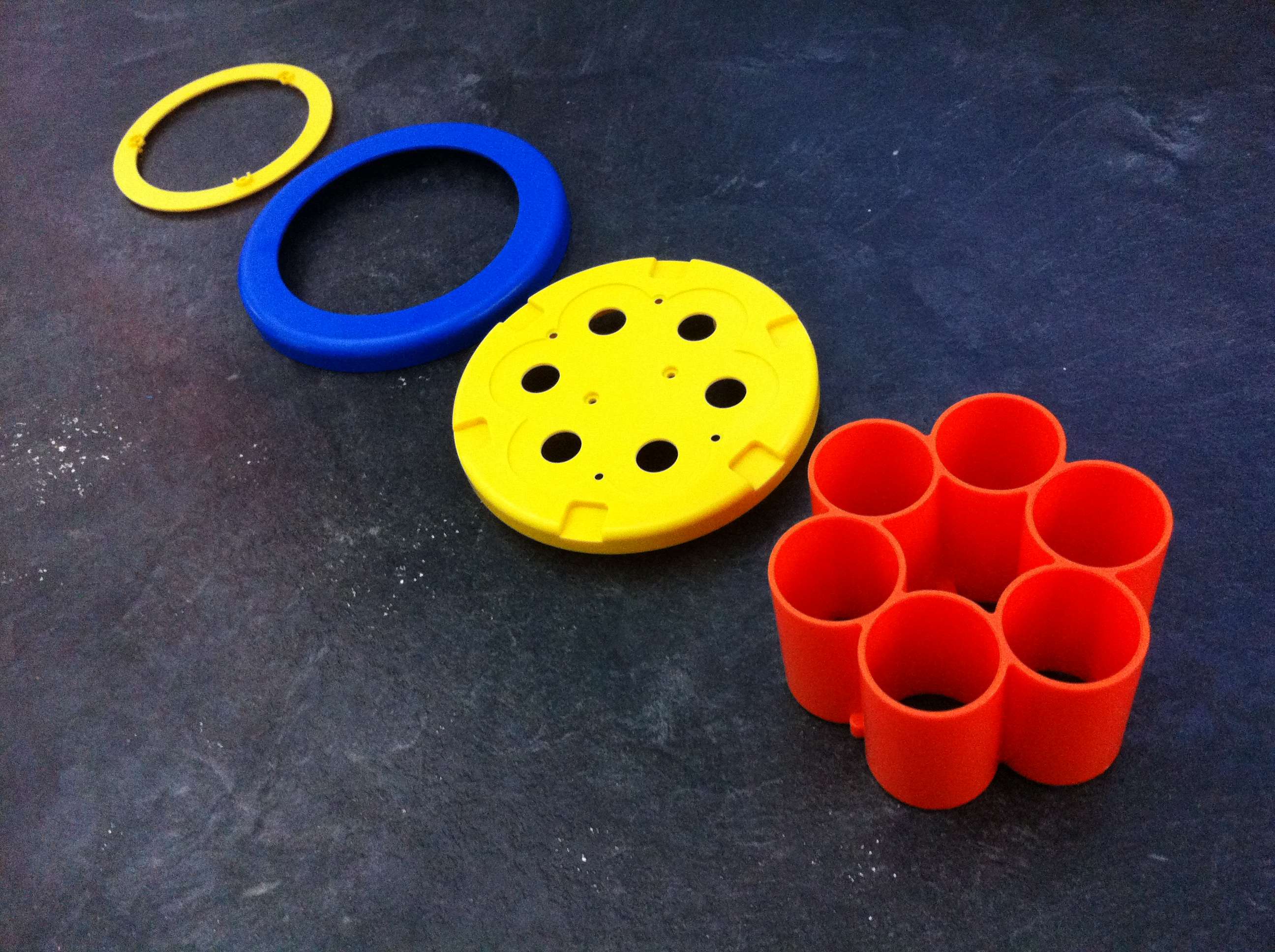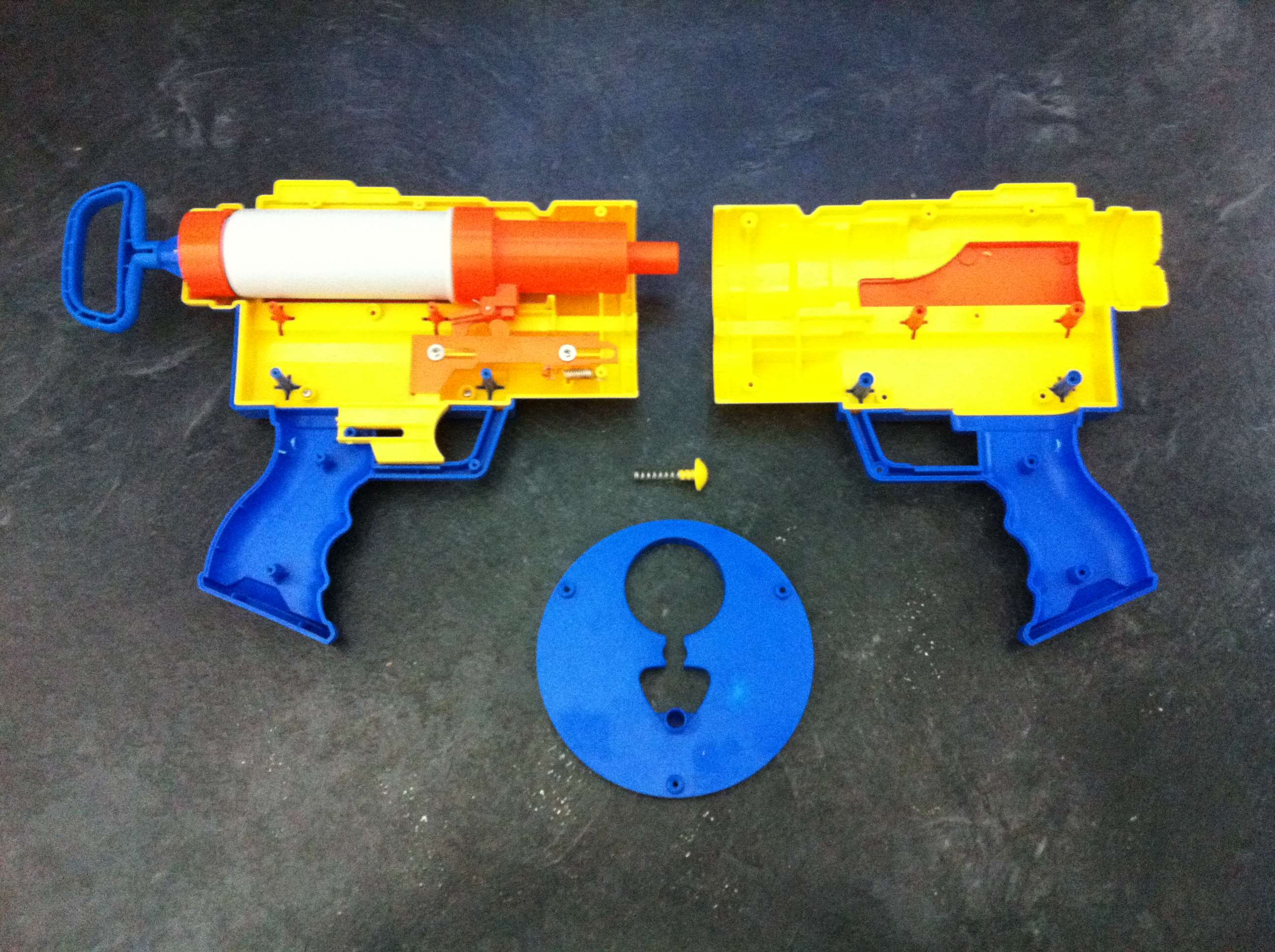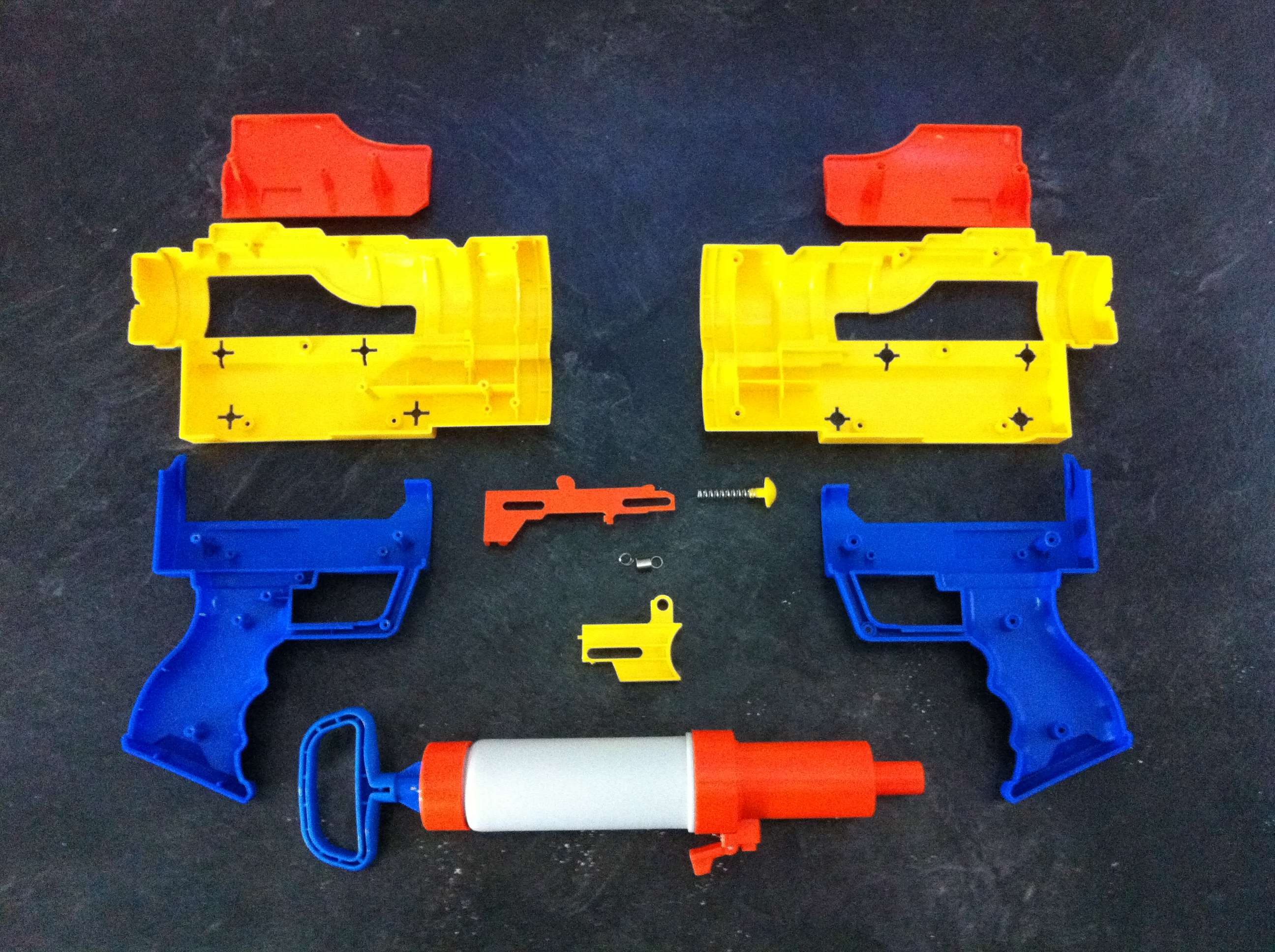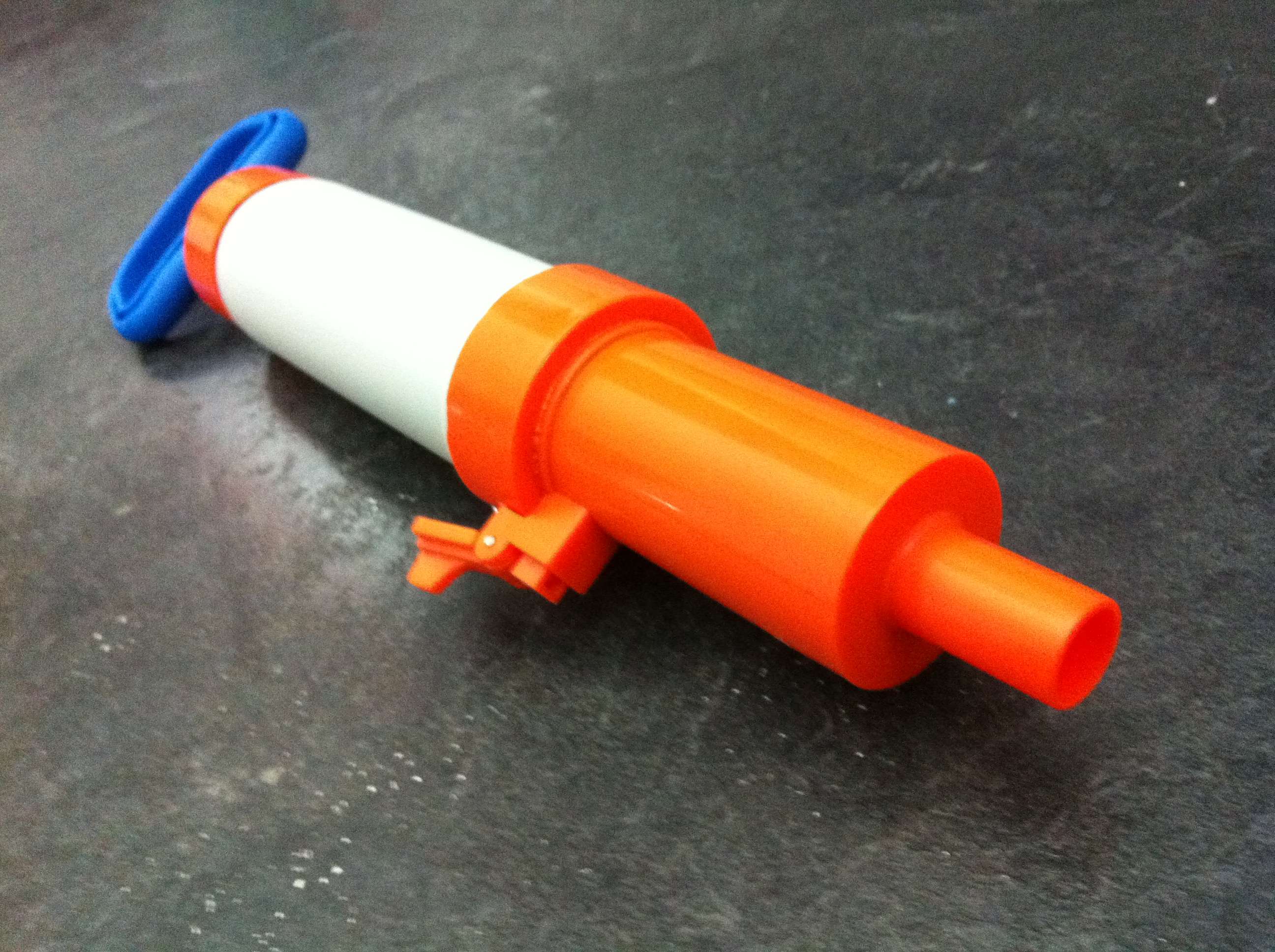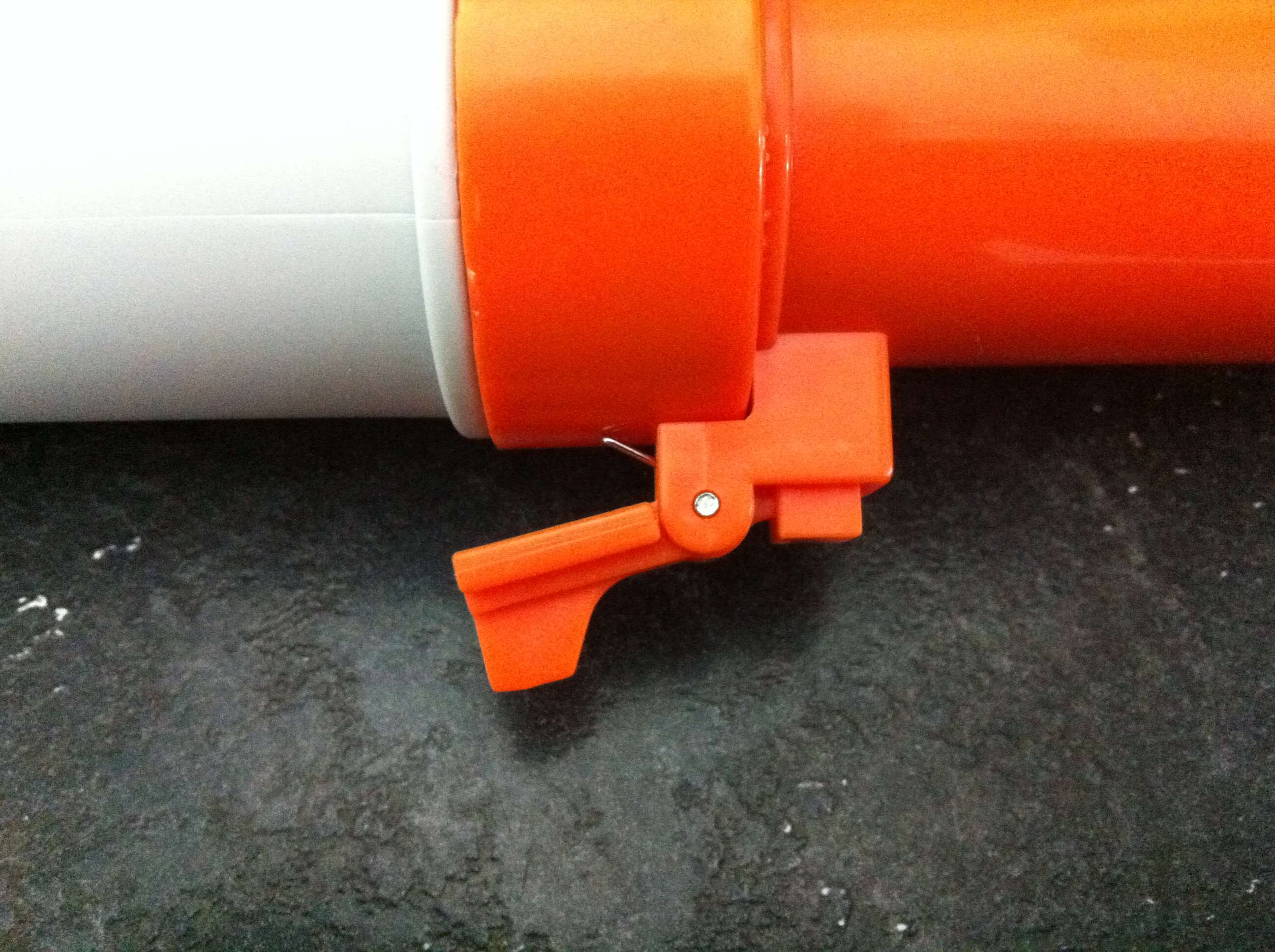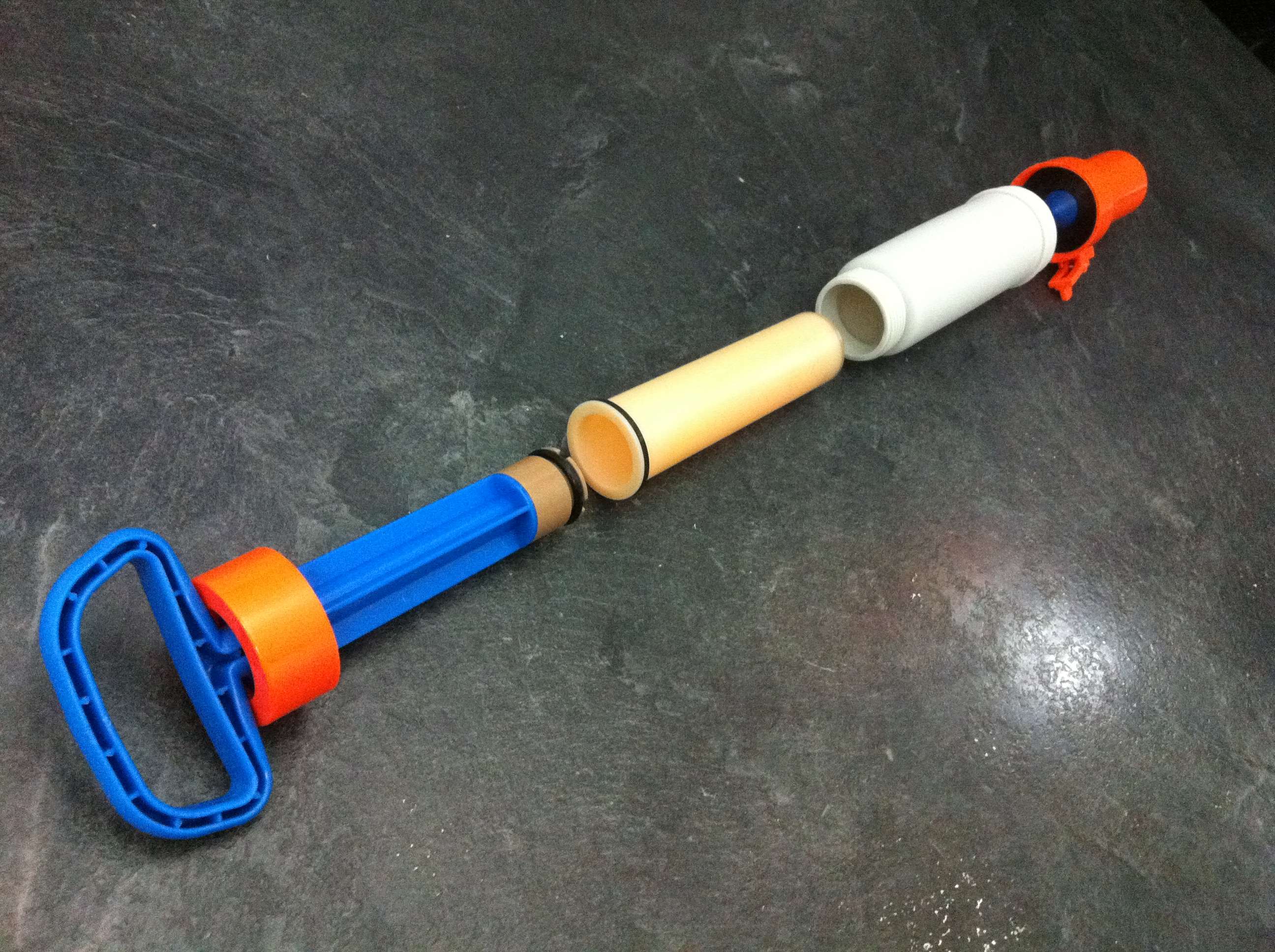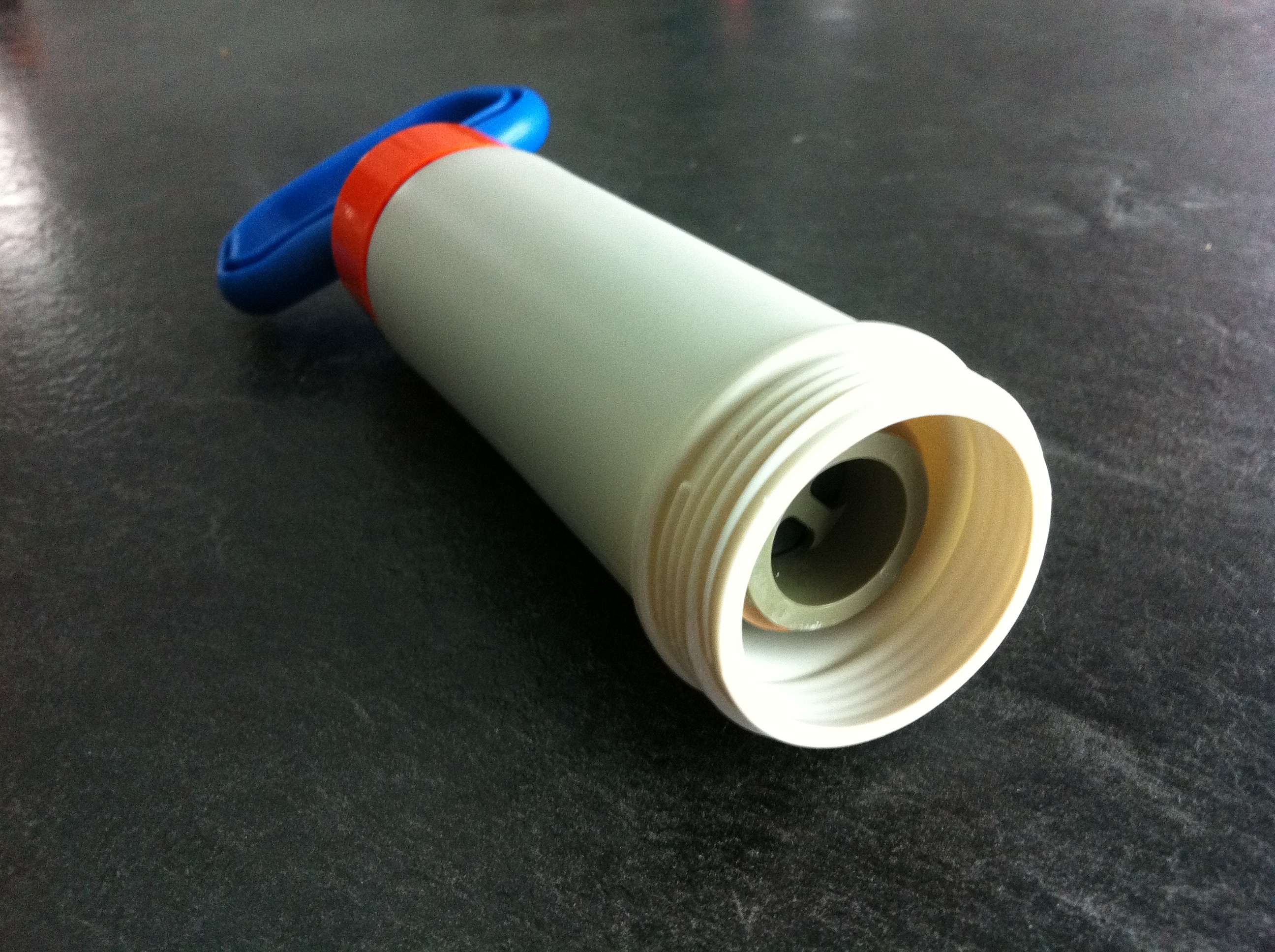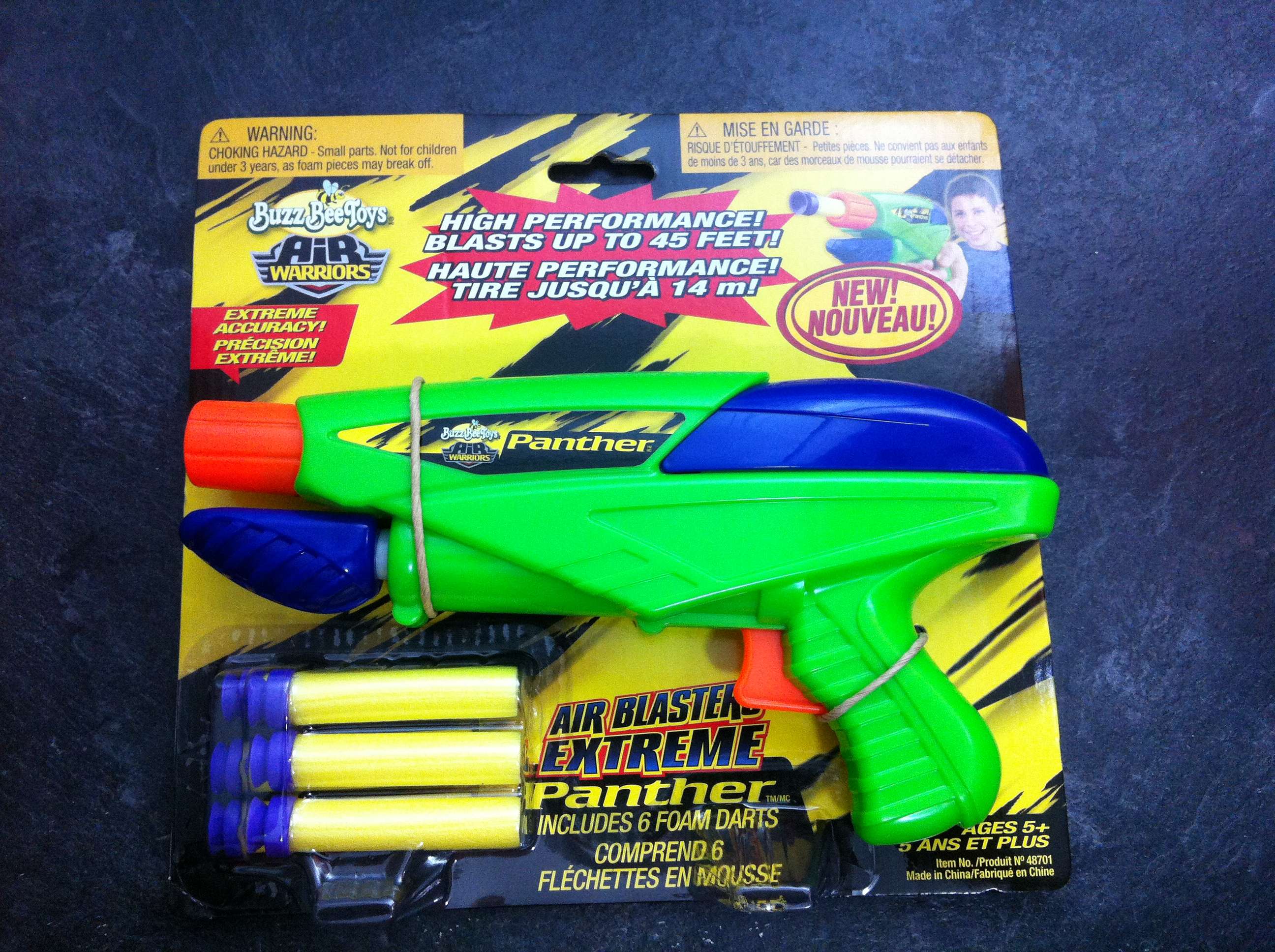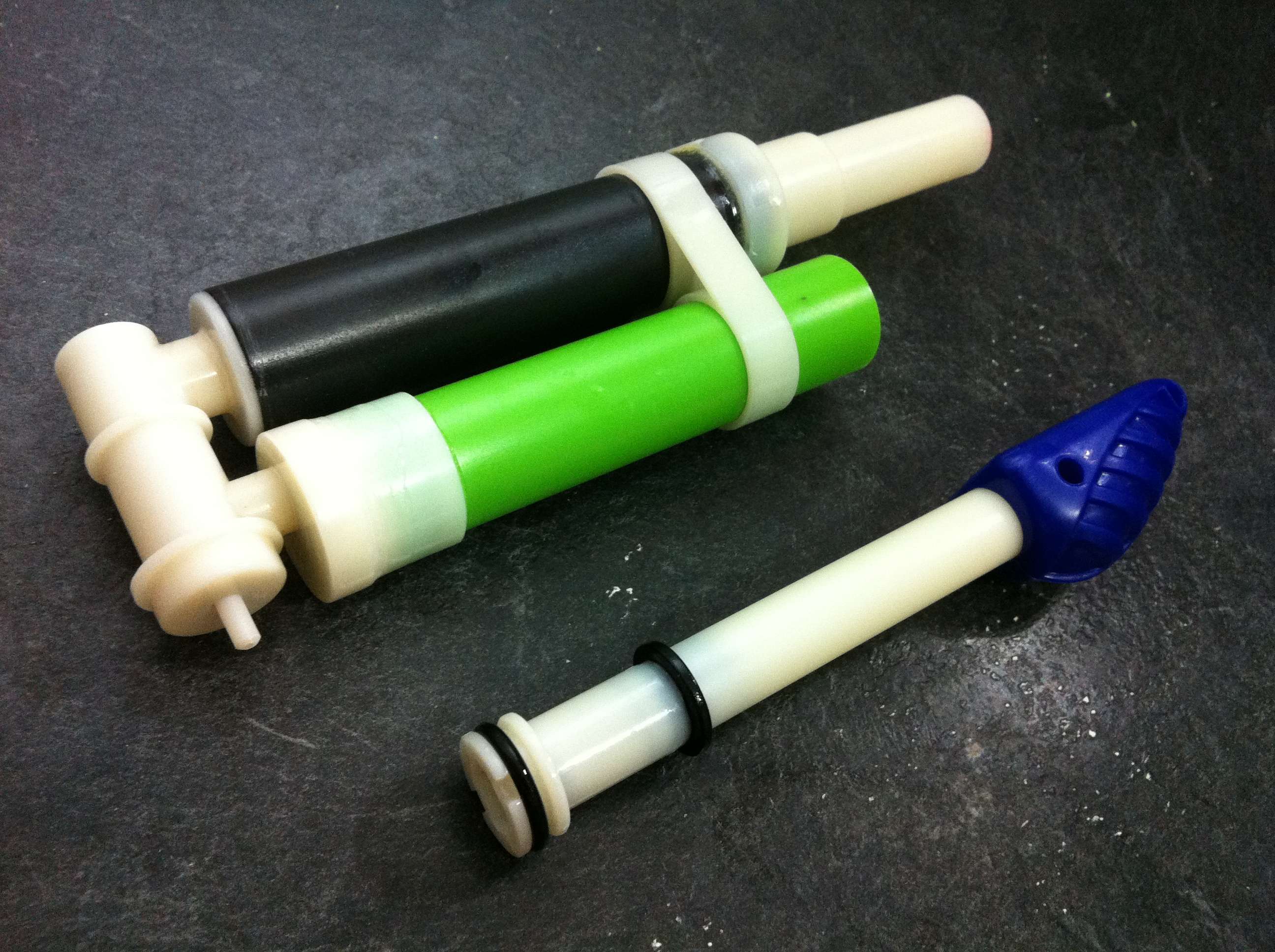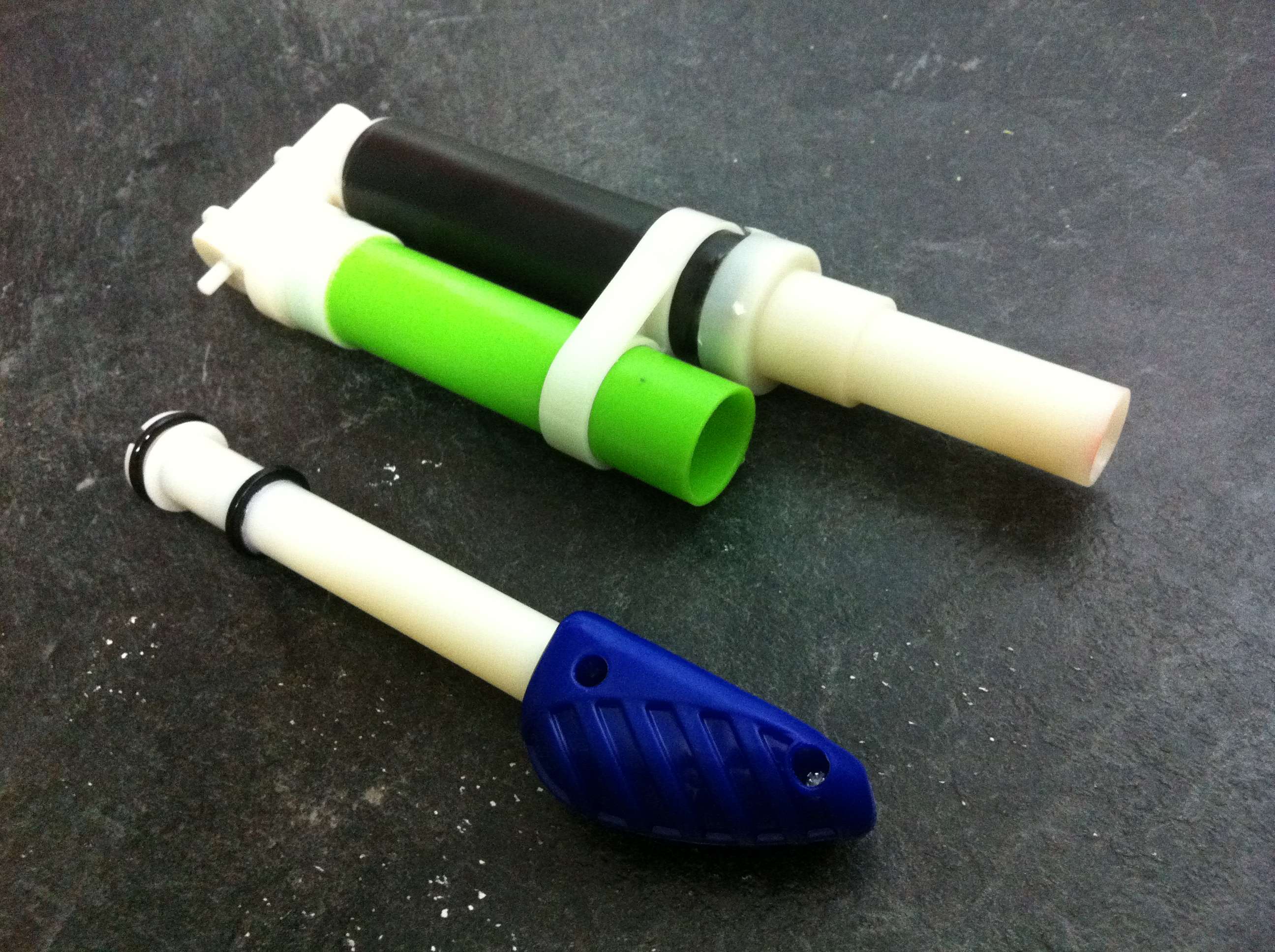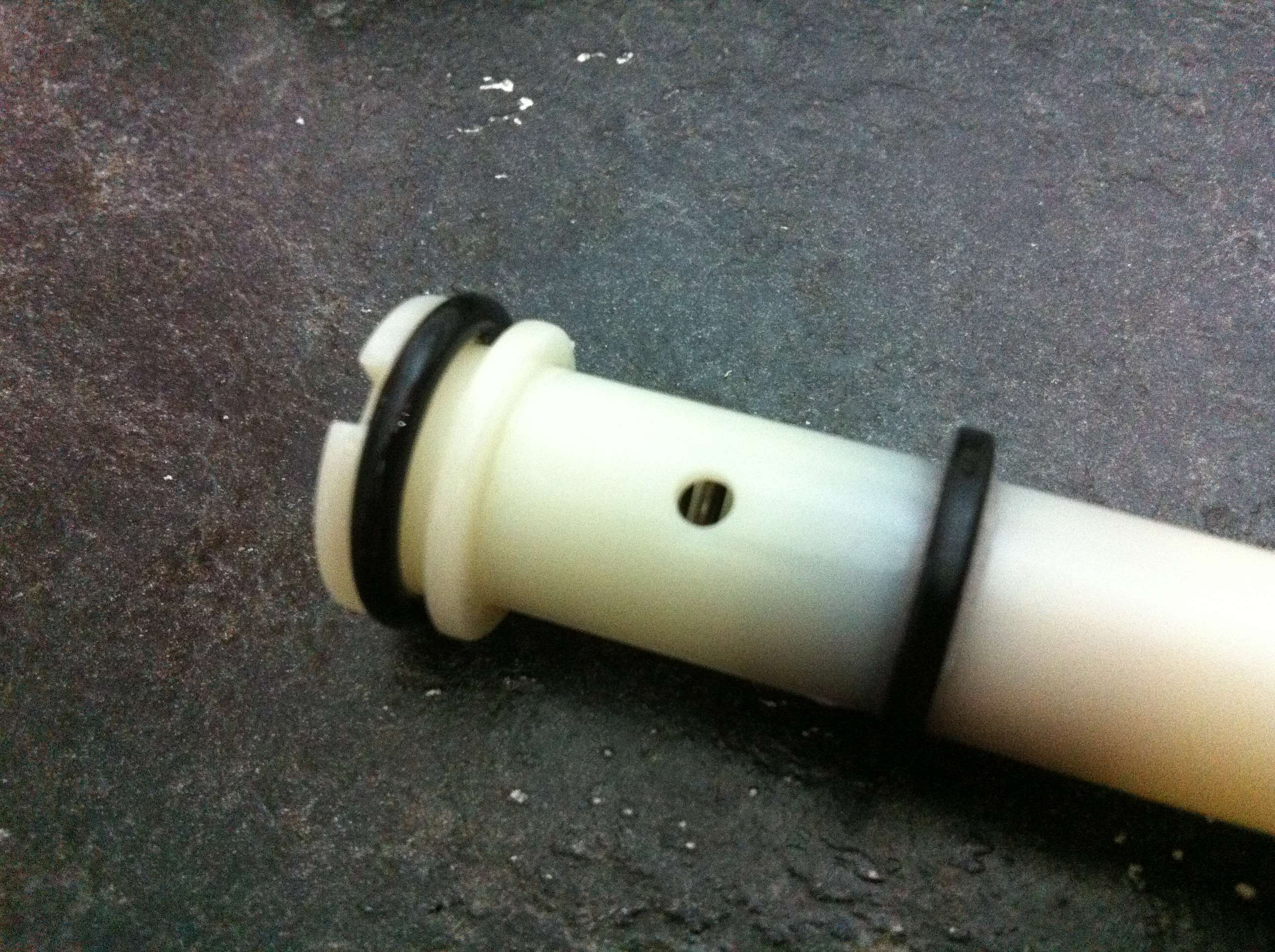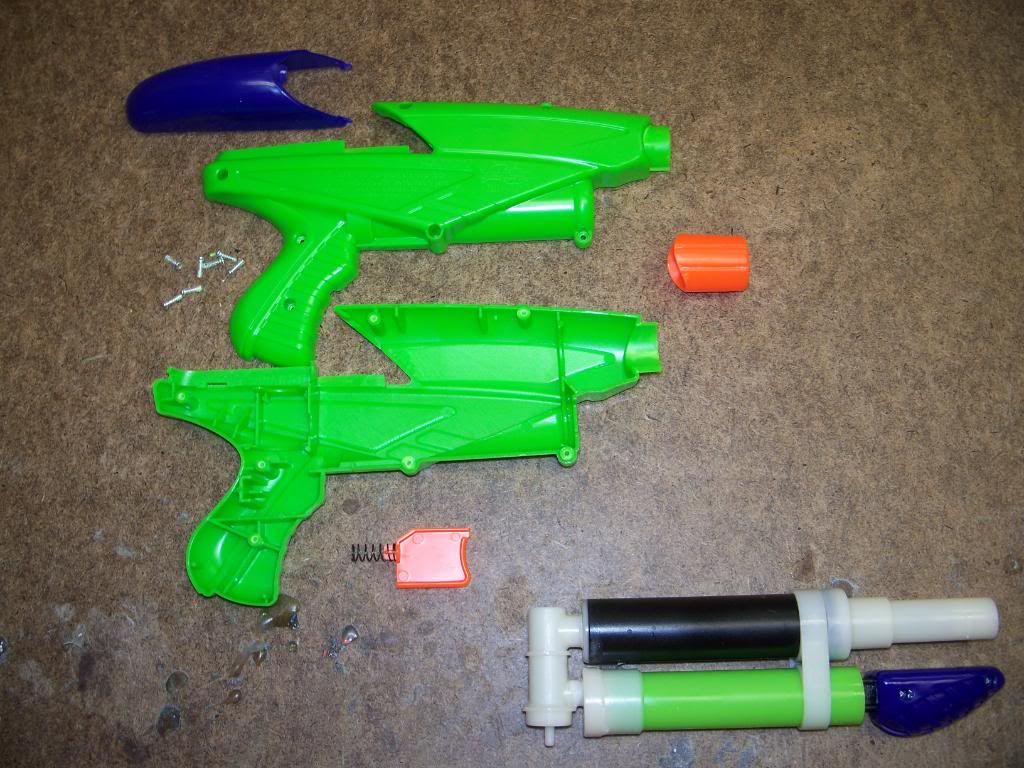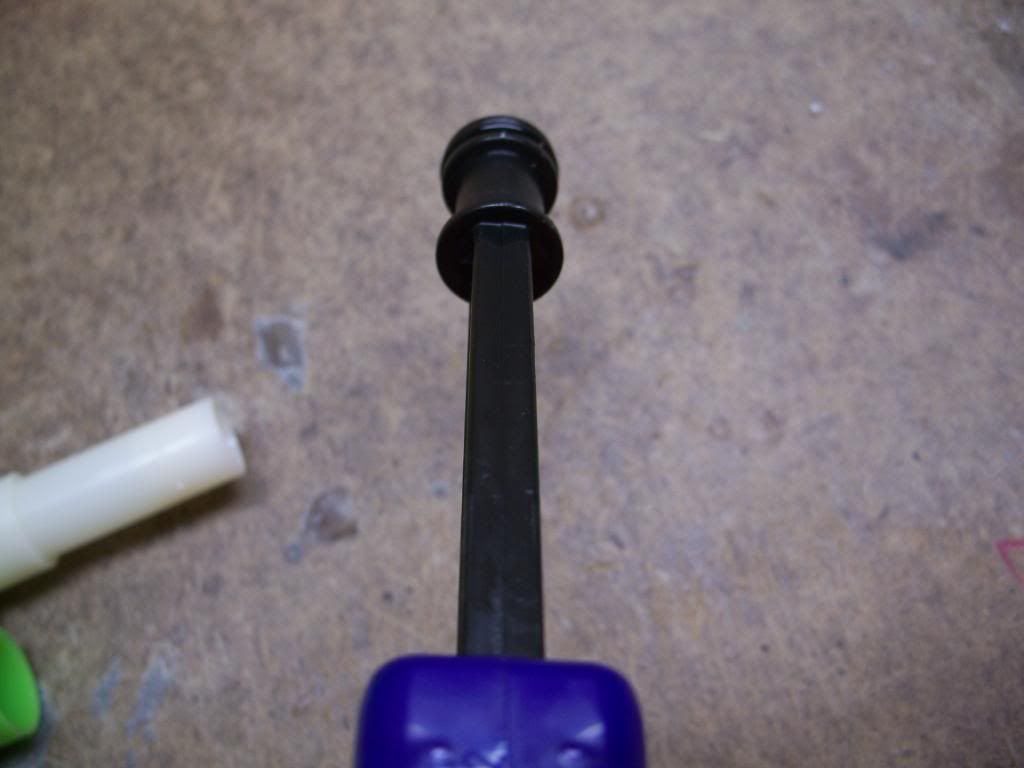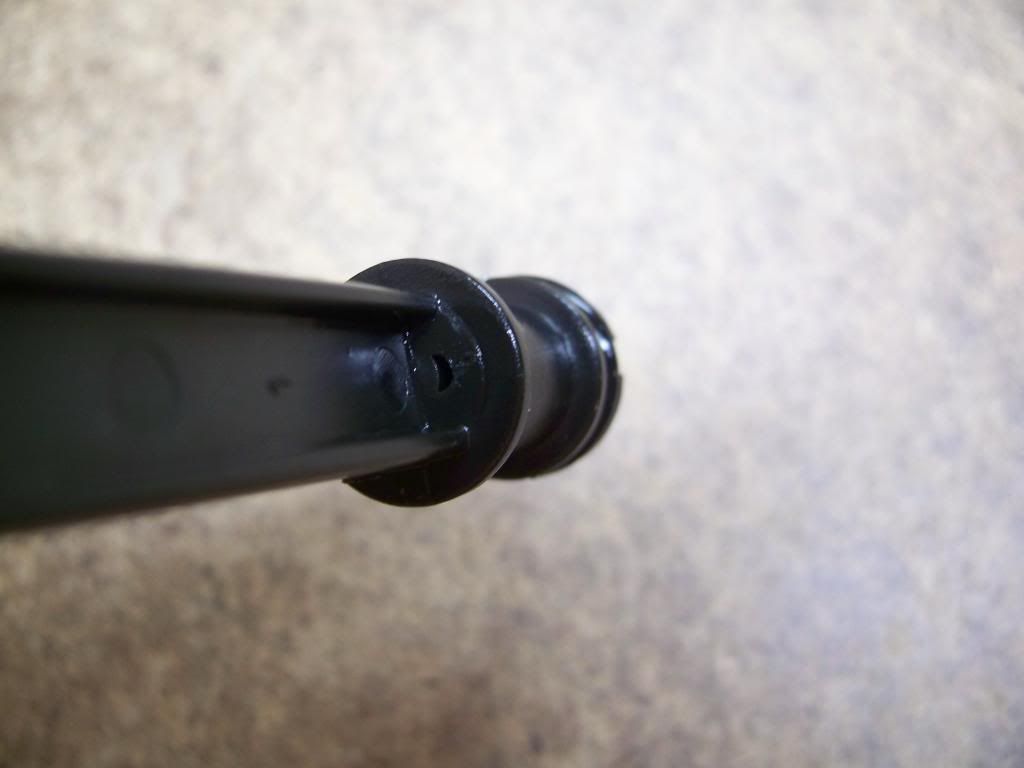Extensive Battle Max Sceptor V1.0 internals.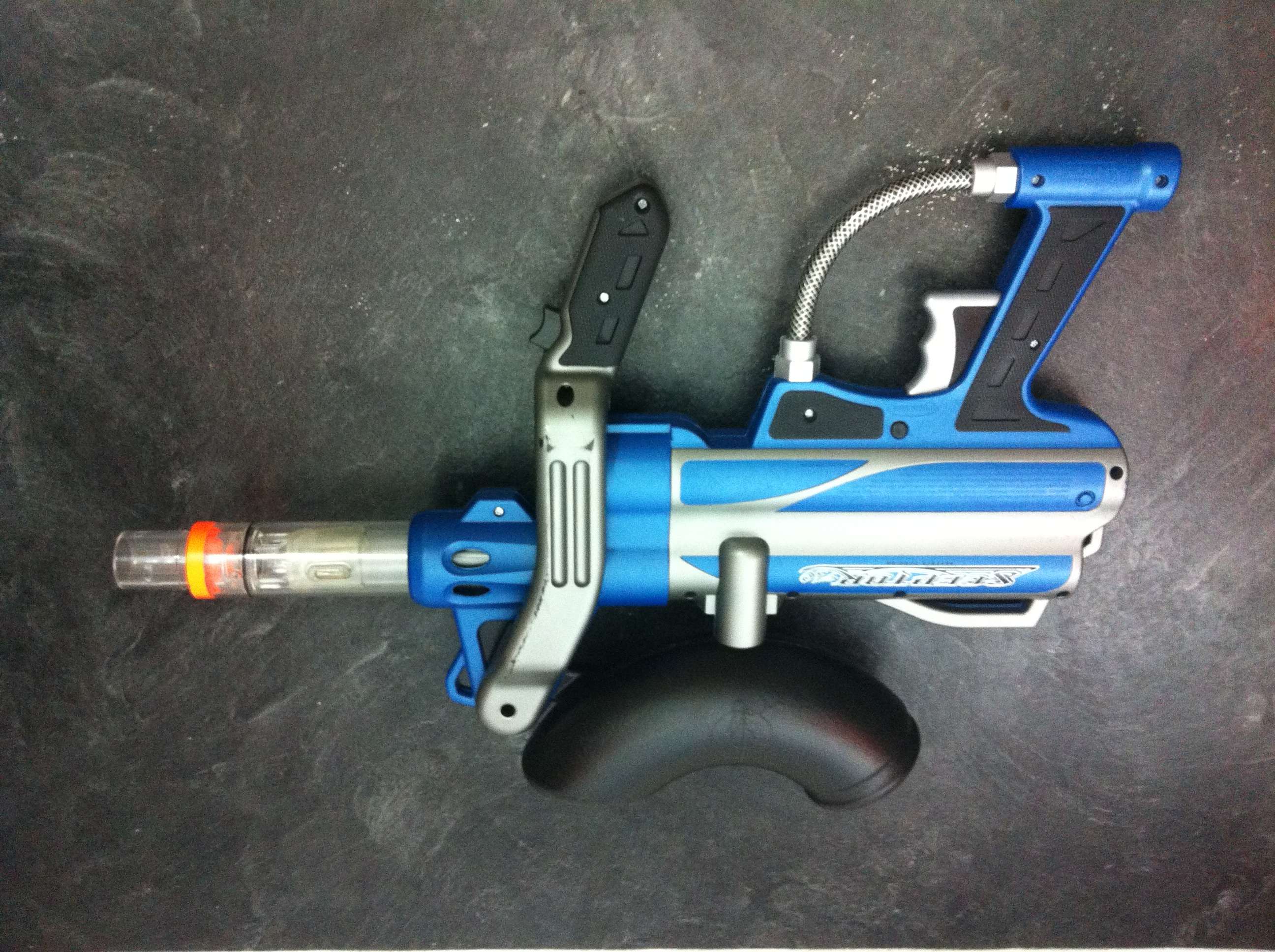
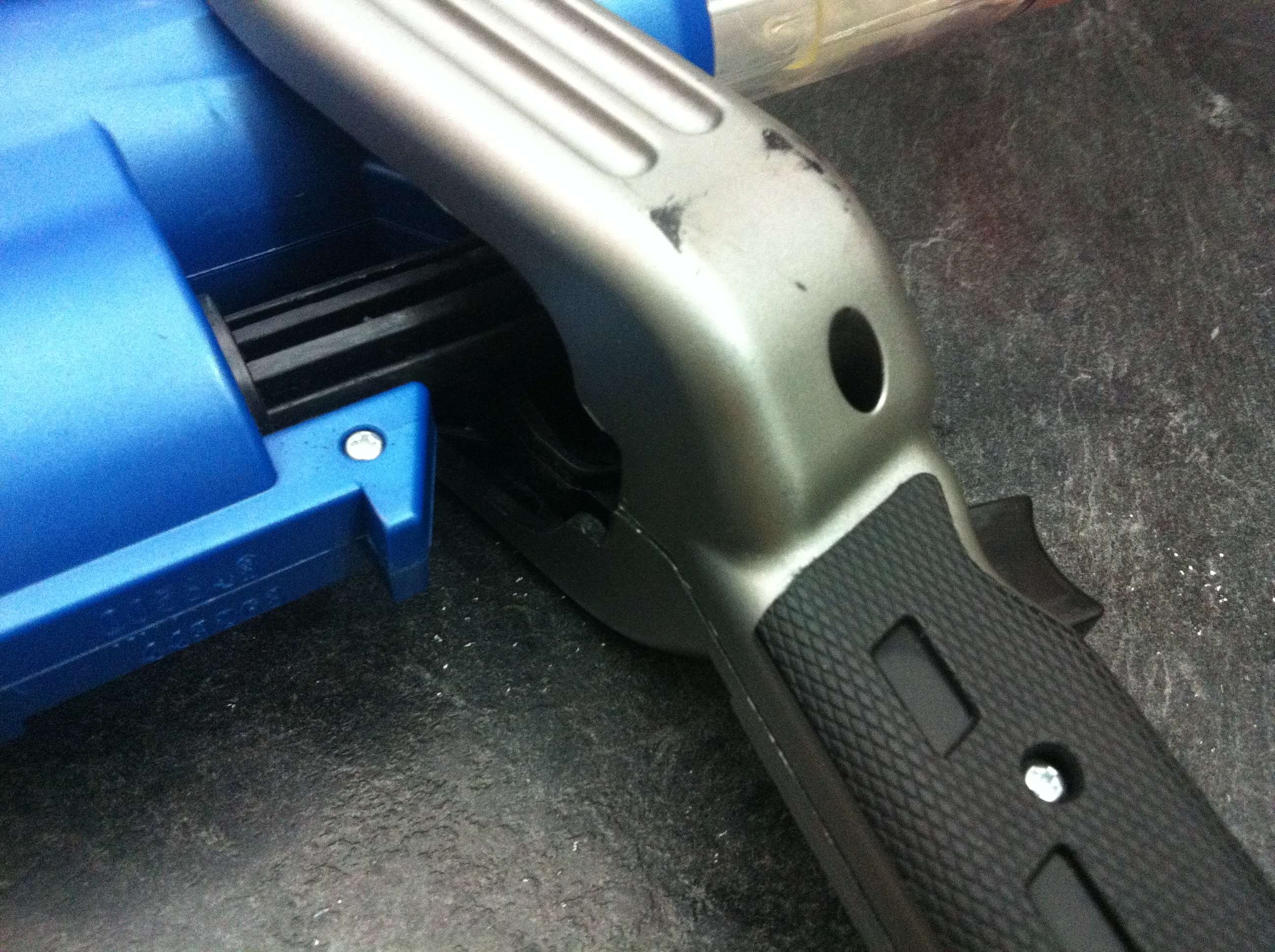
The lever type pump handle has a 'safety lock' that needs to be depressed in order to activate the lever. It serves no real purpose except to keep the lever from swinging around when it is not in use.
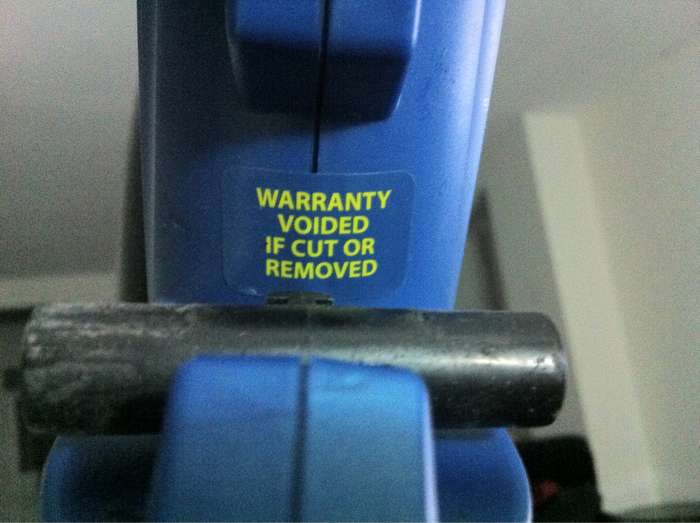
A curious little sticker that makes no sense.
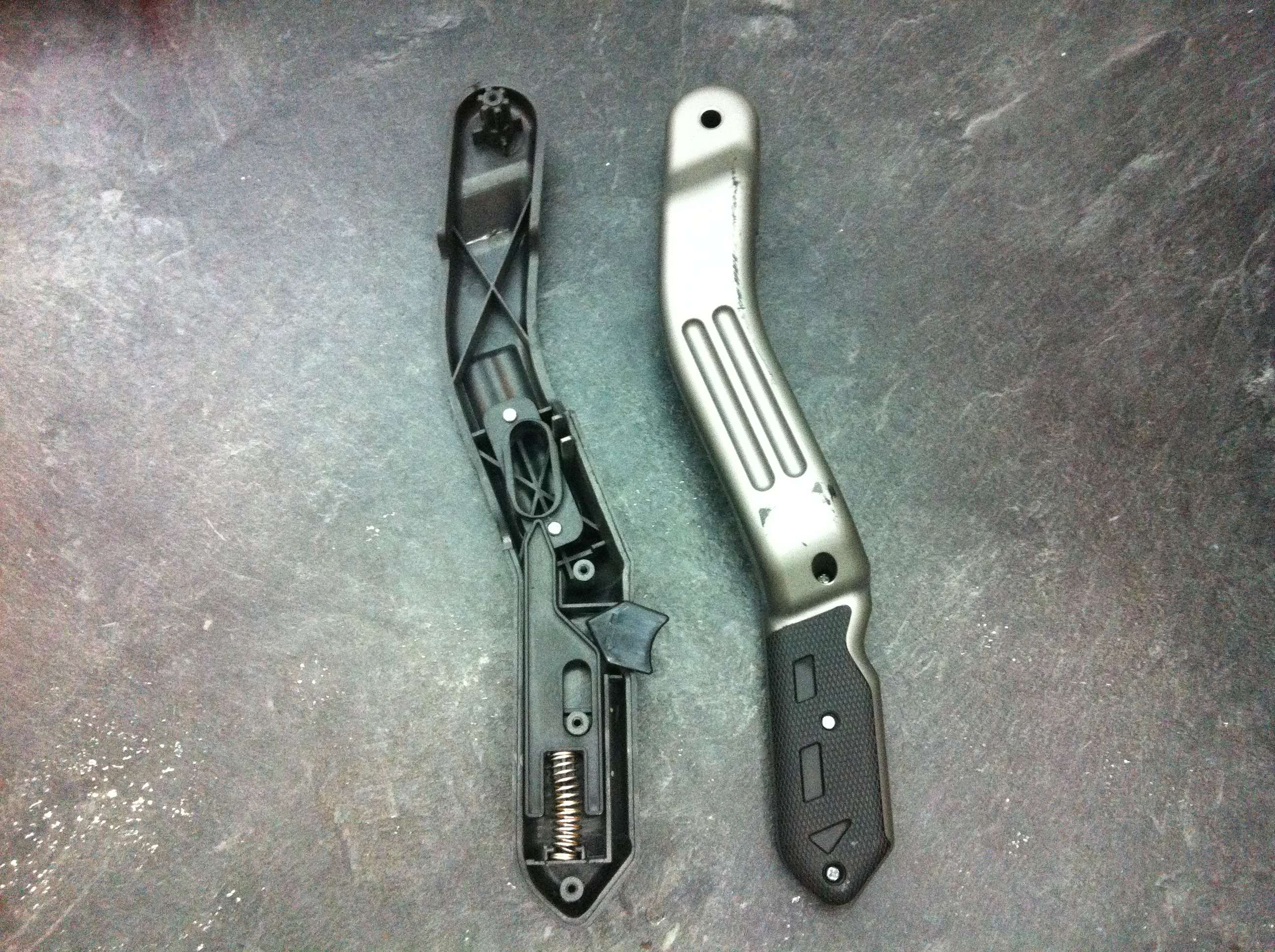
Lever assembly is pretty straight forward.
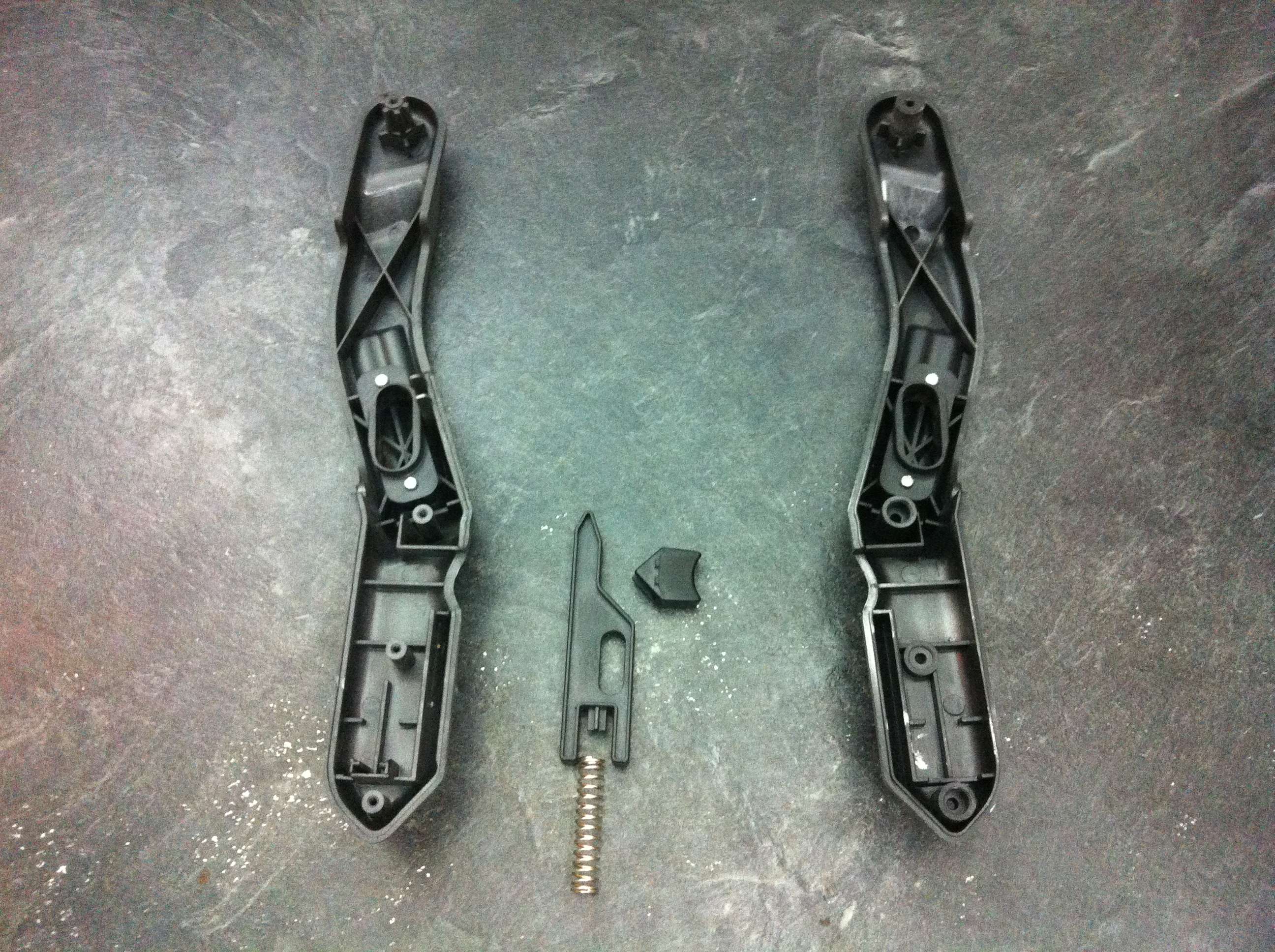
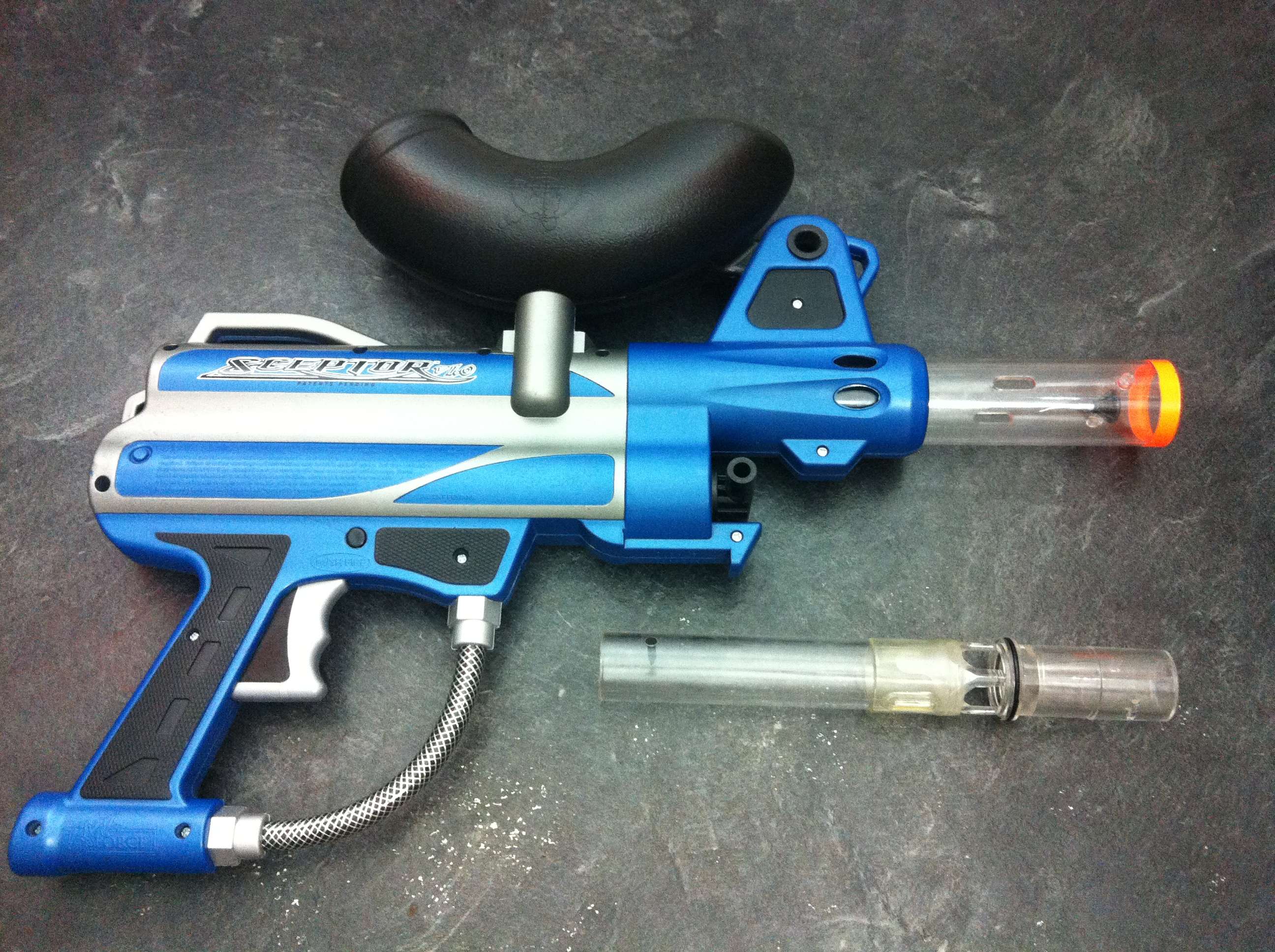
Here it is without the lever and the 'paint ball clip' taken out. This model was missing the locking muzzle but it is not needed for our purposes.
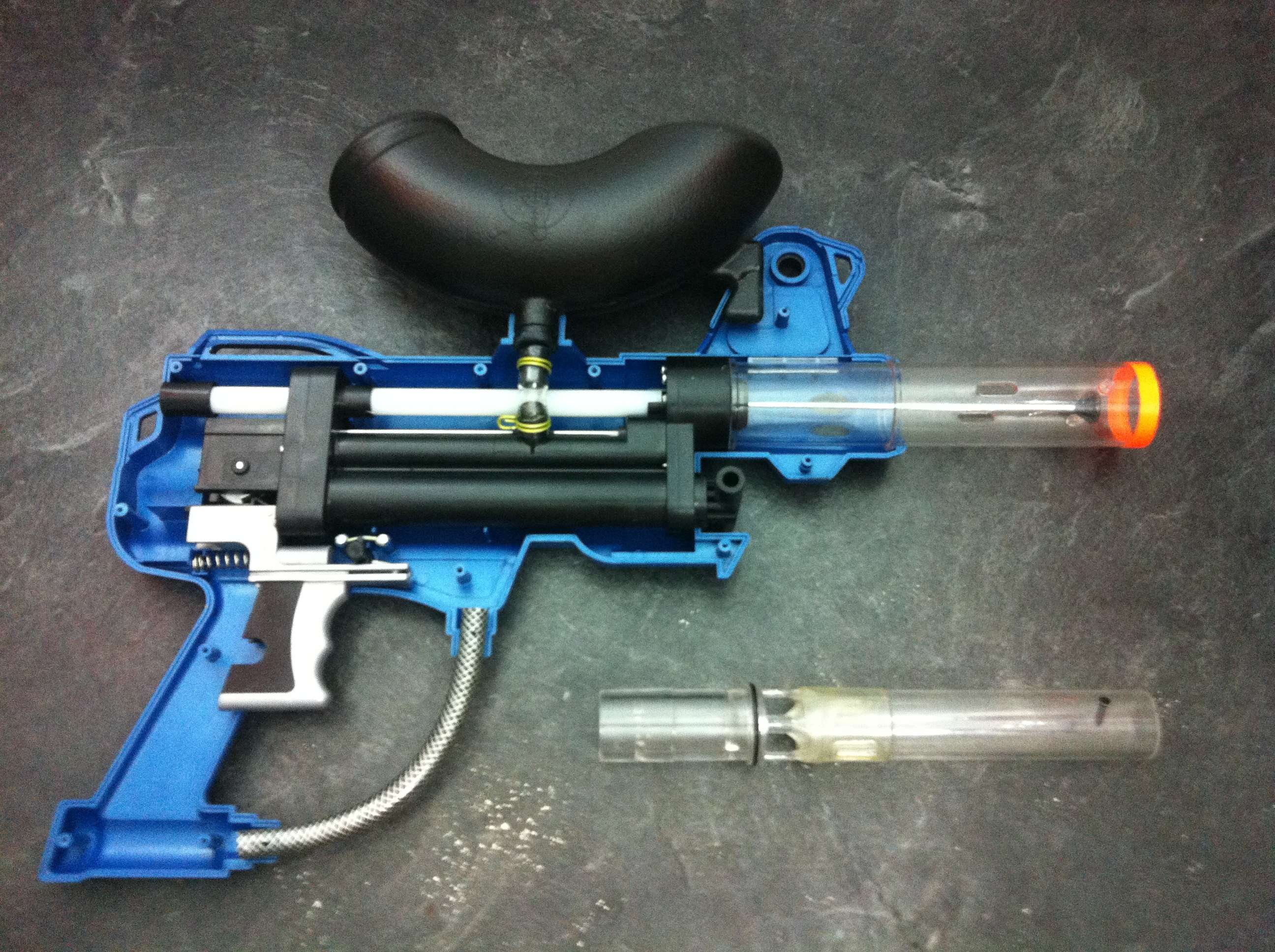
Rudimentary internals
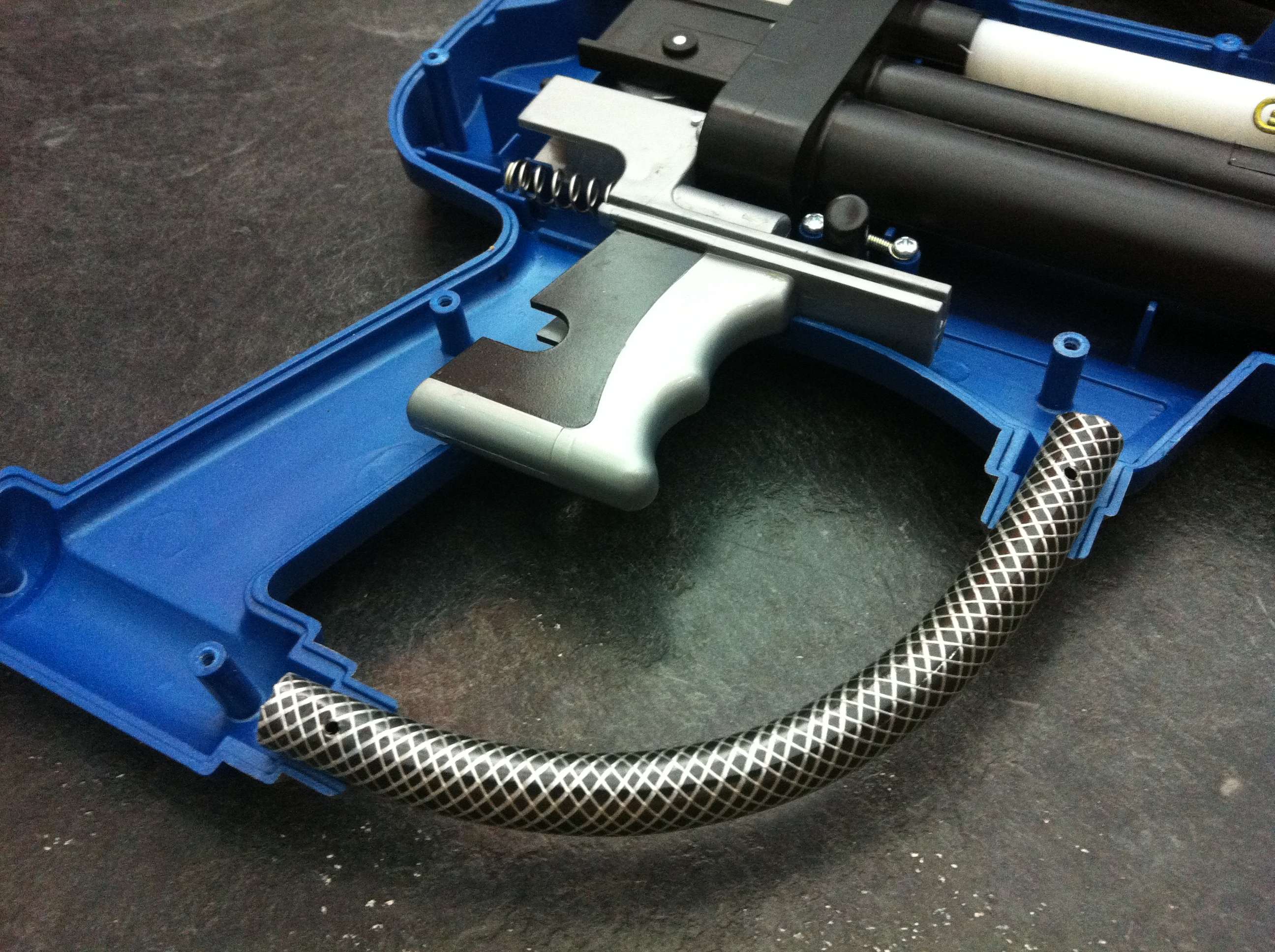
The tubing is purely cosmetic.
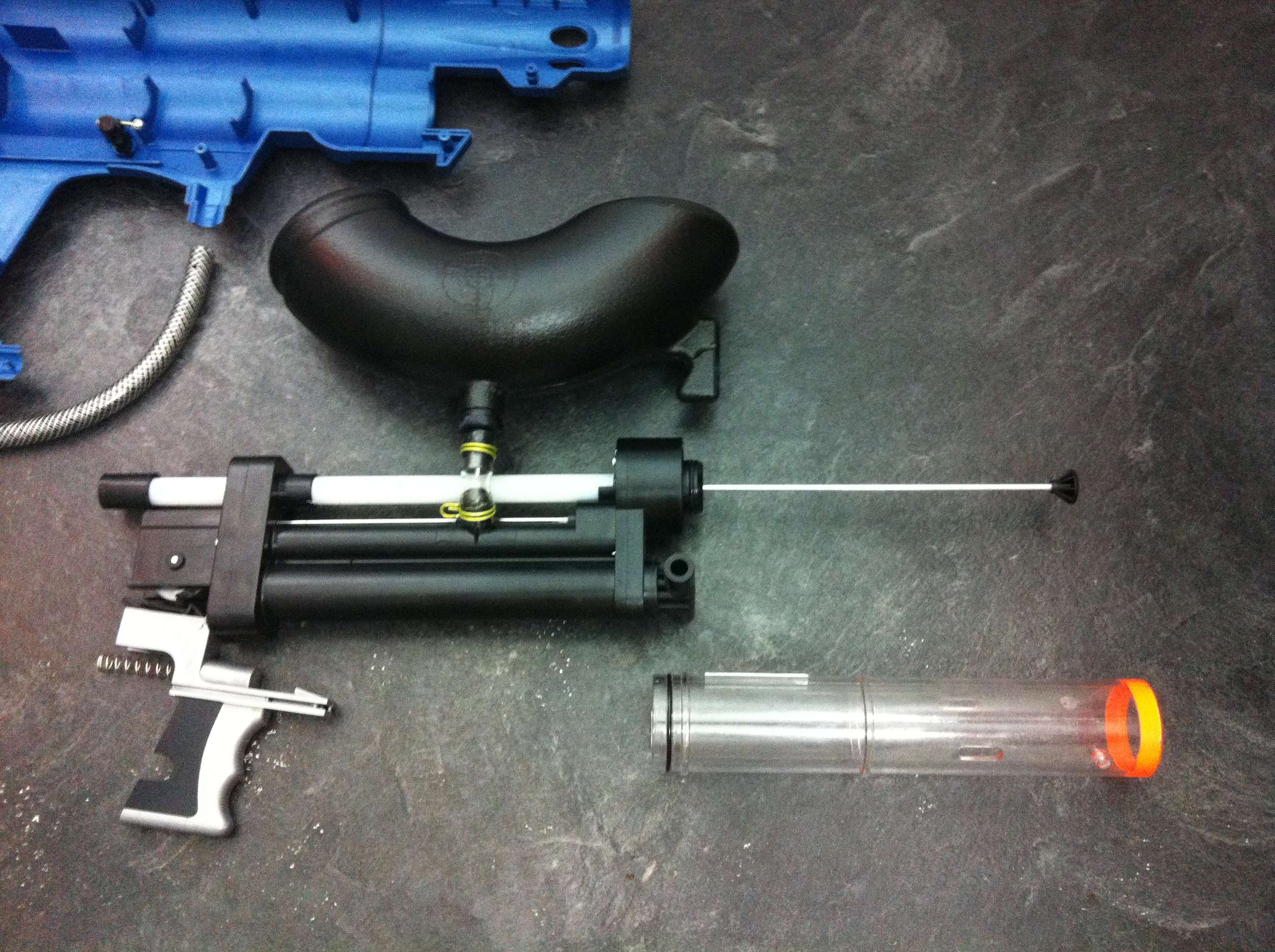
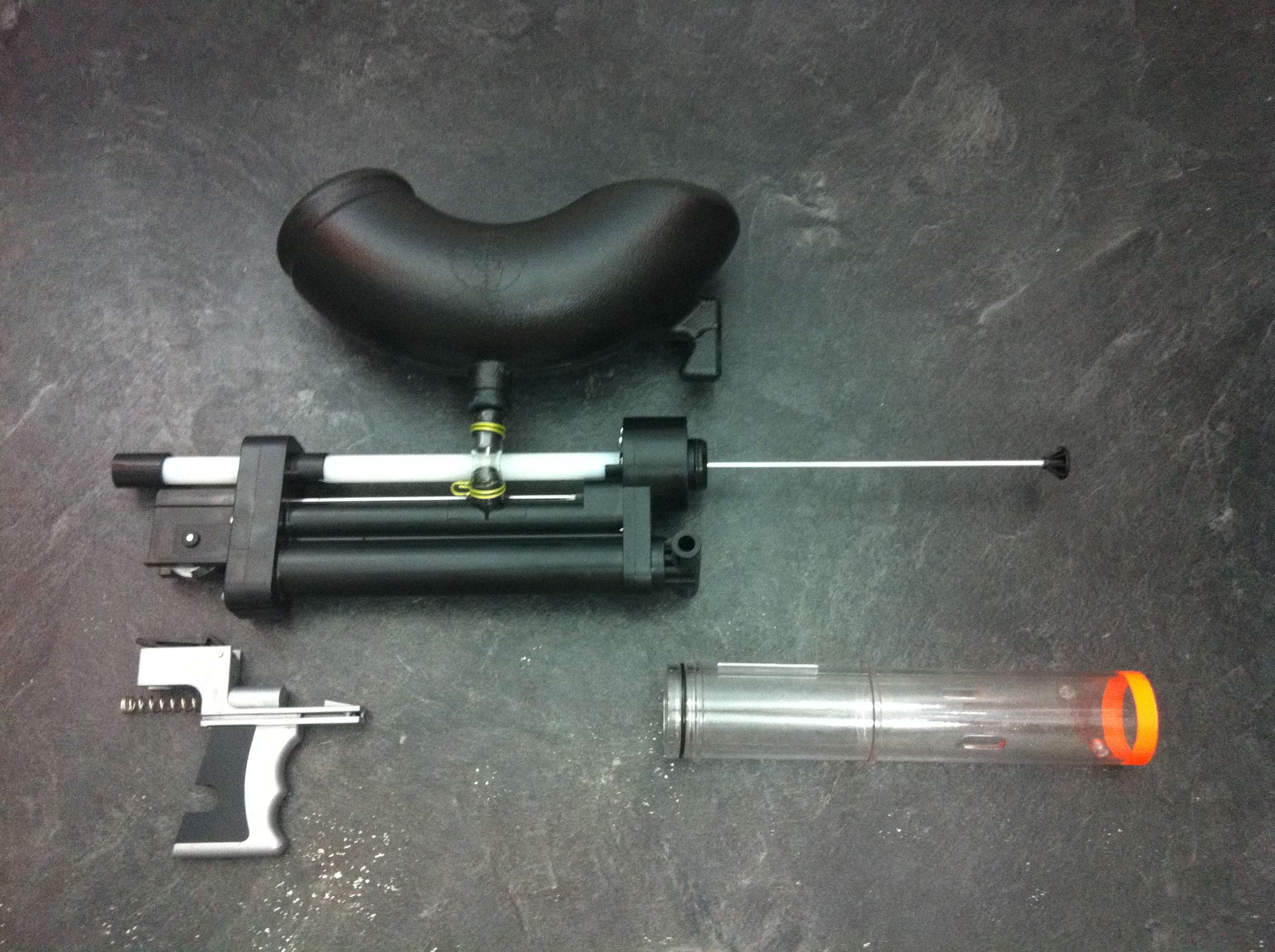
Basic main internals.
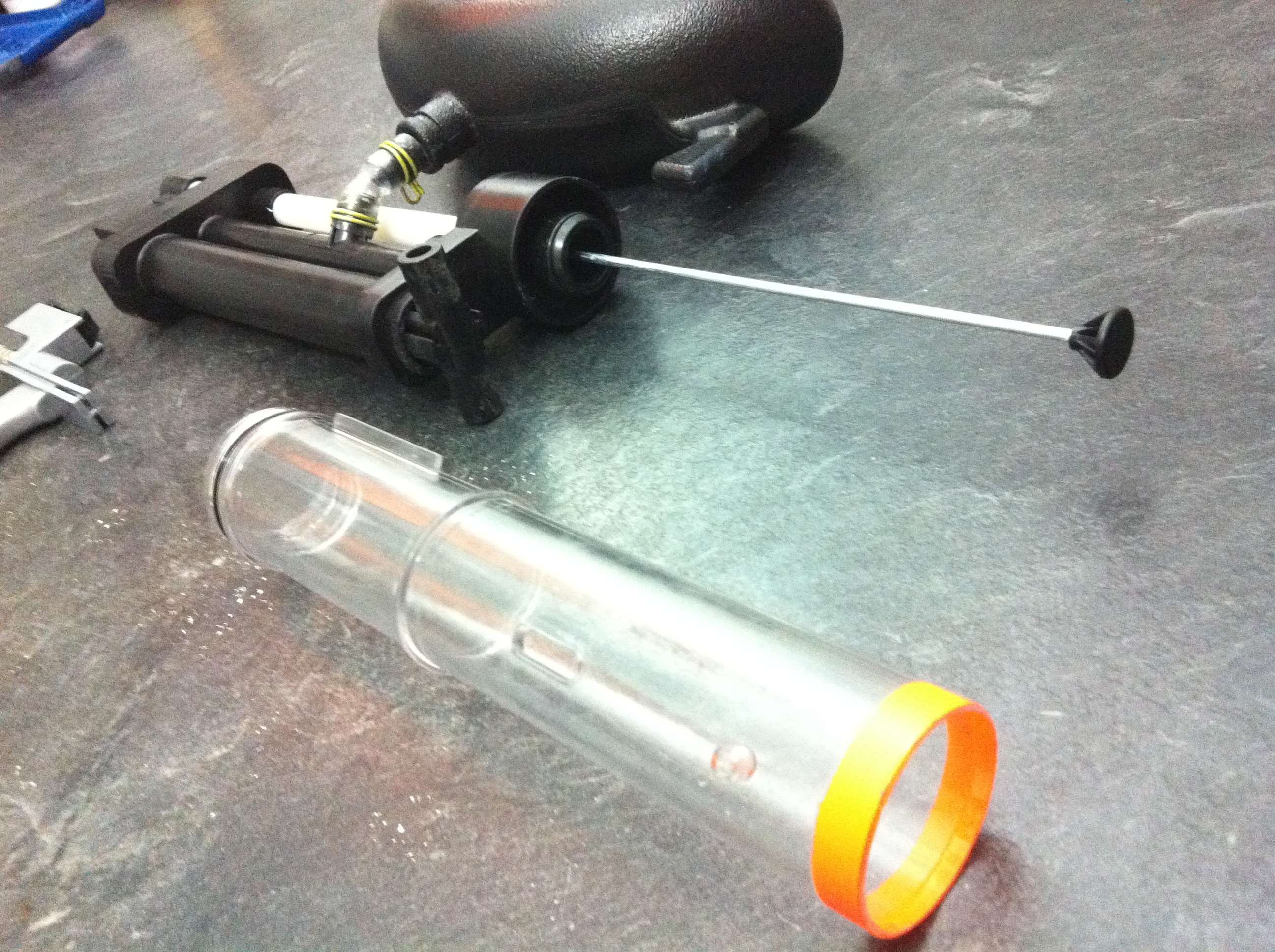
The long rod that's centred within the barrel is actually just the ball pusher. The white tube houses a weak spring that keeps the rod pushed forward. This is not the firing pin or where the air actually comes out.
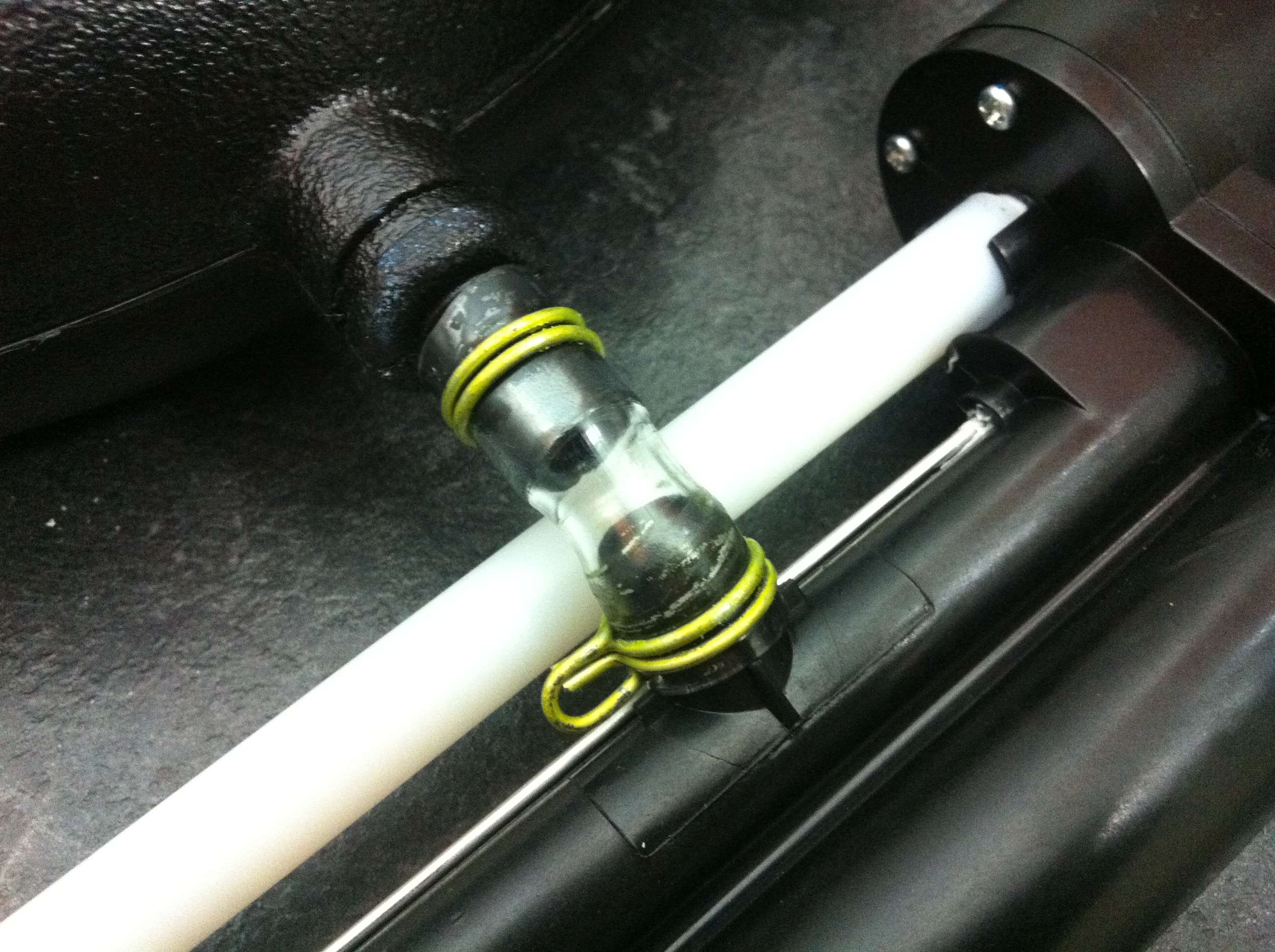
The hopper is actually the air tank that's connected via this vinyl tube with spring clips securing it to the main assembly.
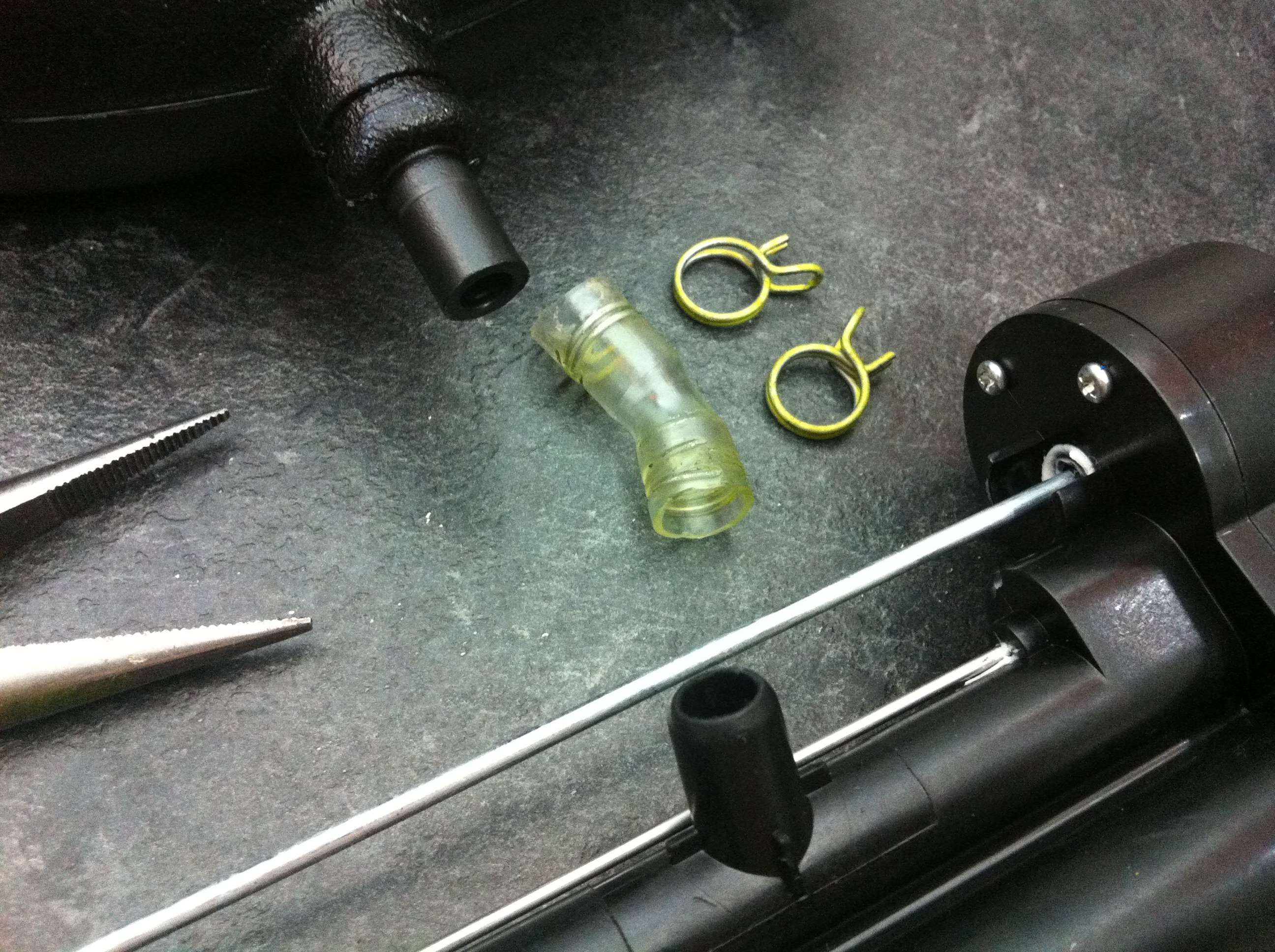
Squeezing the clips with a set of pliers, the tank and vinyl tubing separate relatively easily.
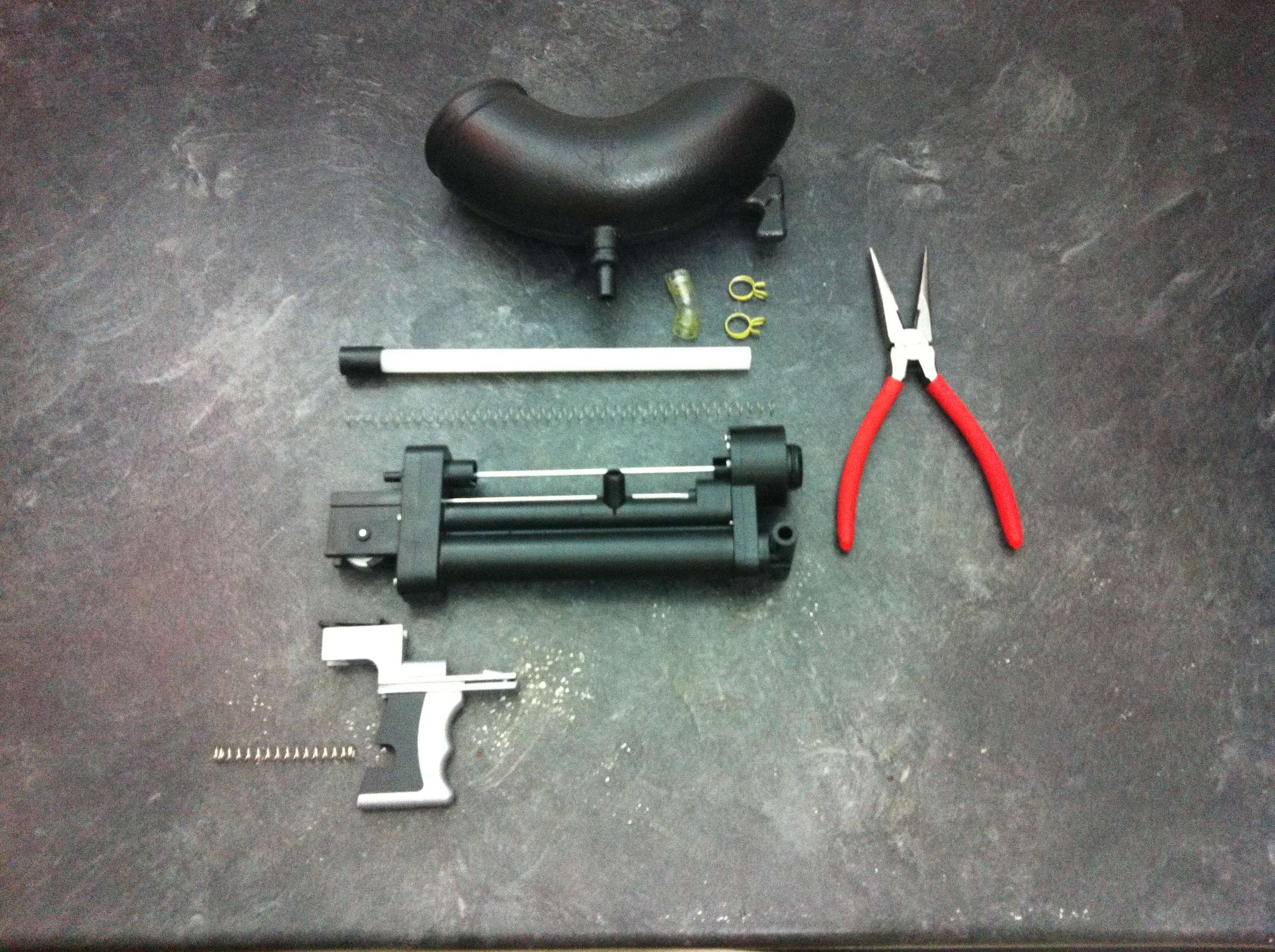
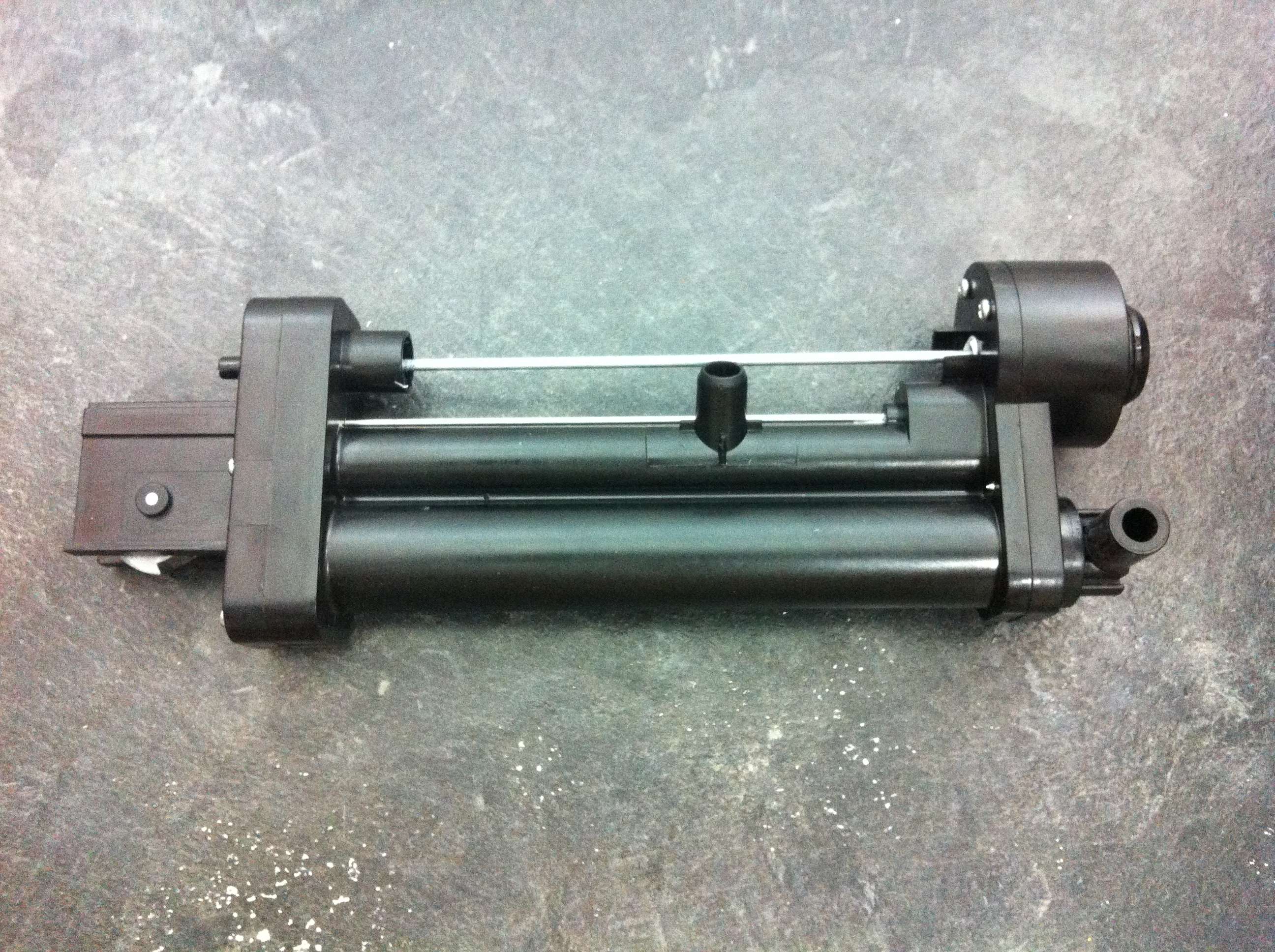
...now, let's get down to the business.

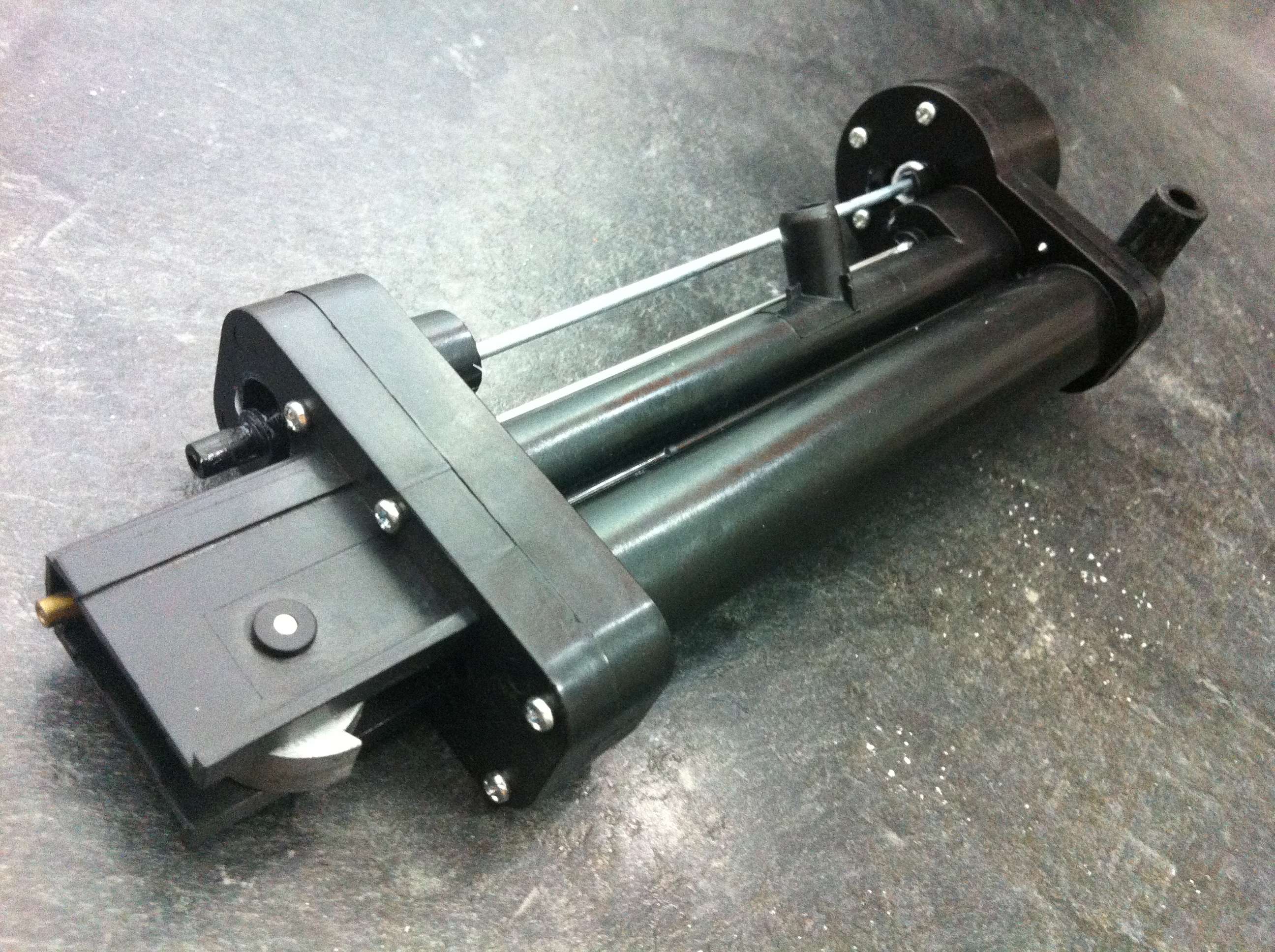
In this rear view, you can see the actual firing pin. It's the rod with the brass fitting. NOT the one above.
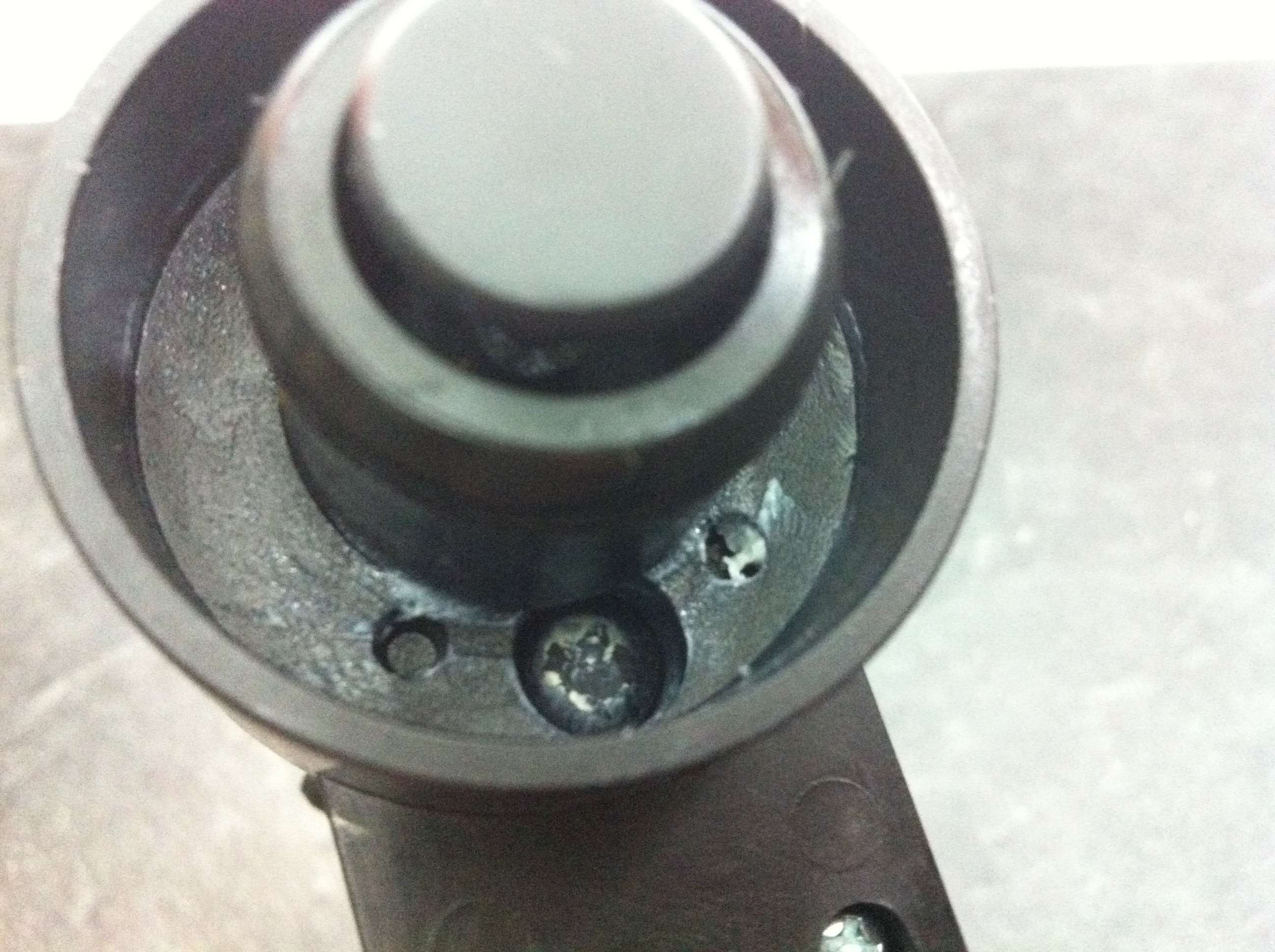
At the front end, we can now see the actual air release hole. It's the hole centred within the lower part of the cavity. It's not the large one in the actual centre. That's the paintball pusher.
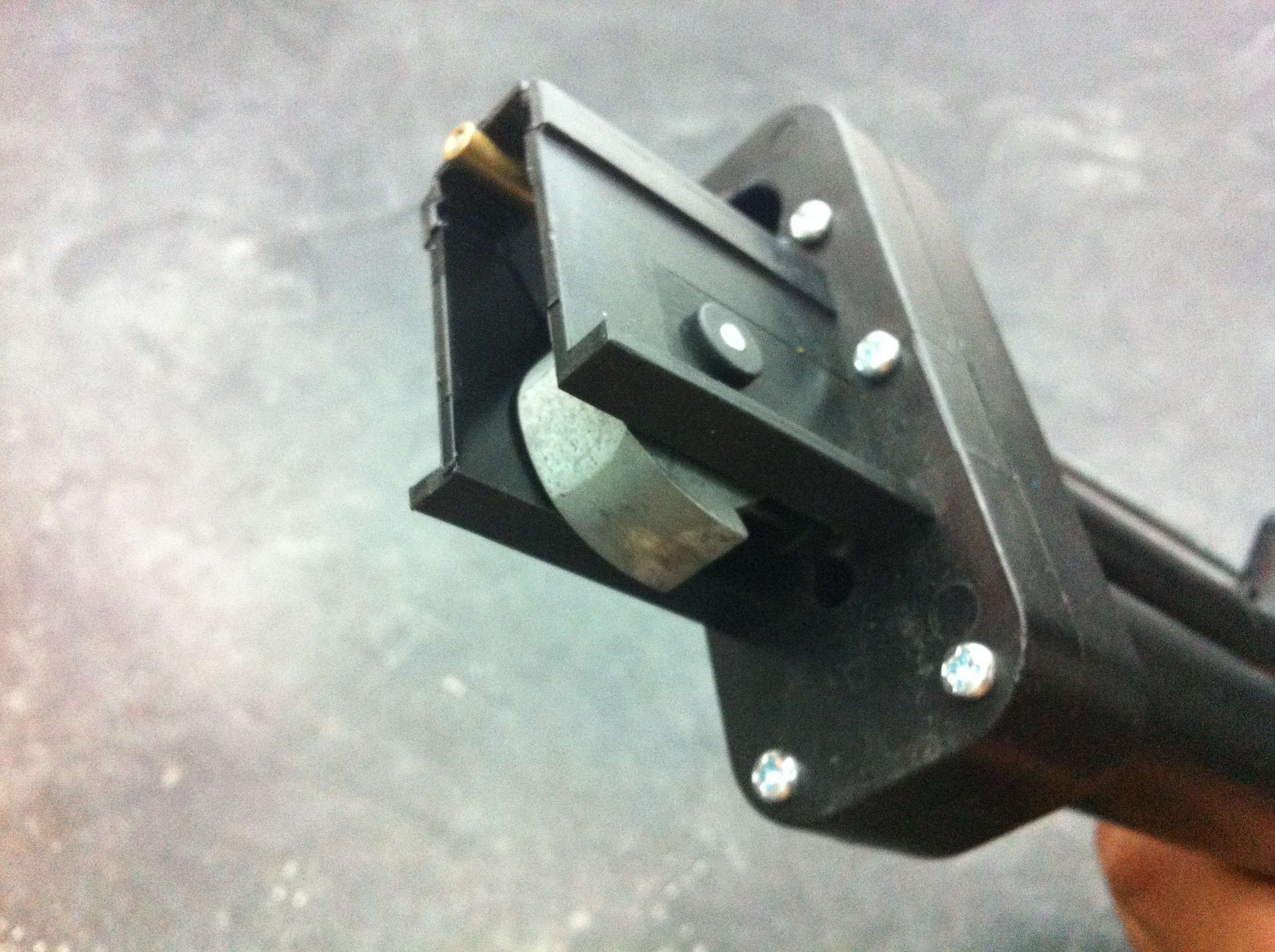
Here's a better view of the actual firing pin and trigger mechanism.
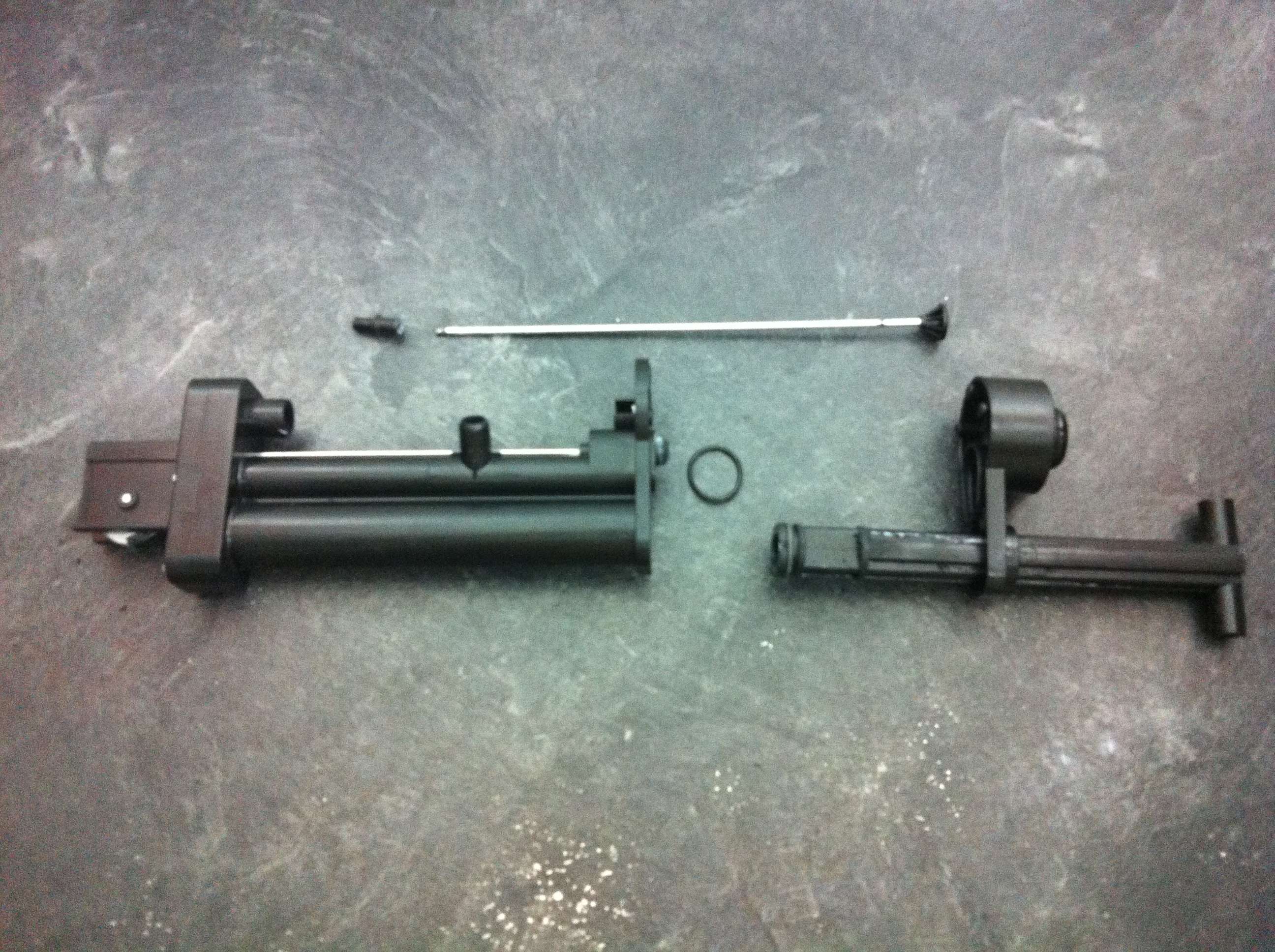
In order to take off the front end, the paintball pusher needs to be separated from the friction fitted nub. The little black piece in the upper left.

The actual firing pin valve and the o-ring that helps seal the front of the tank.

This is the pump head, showing the location of the OPRV.
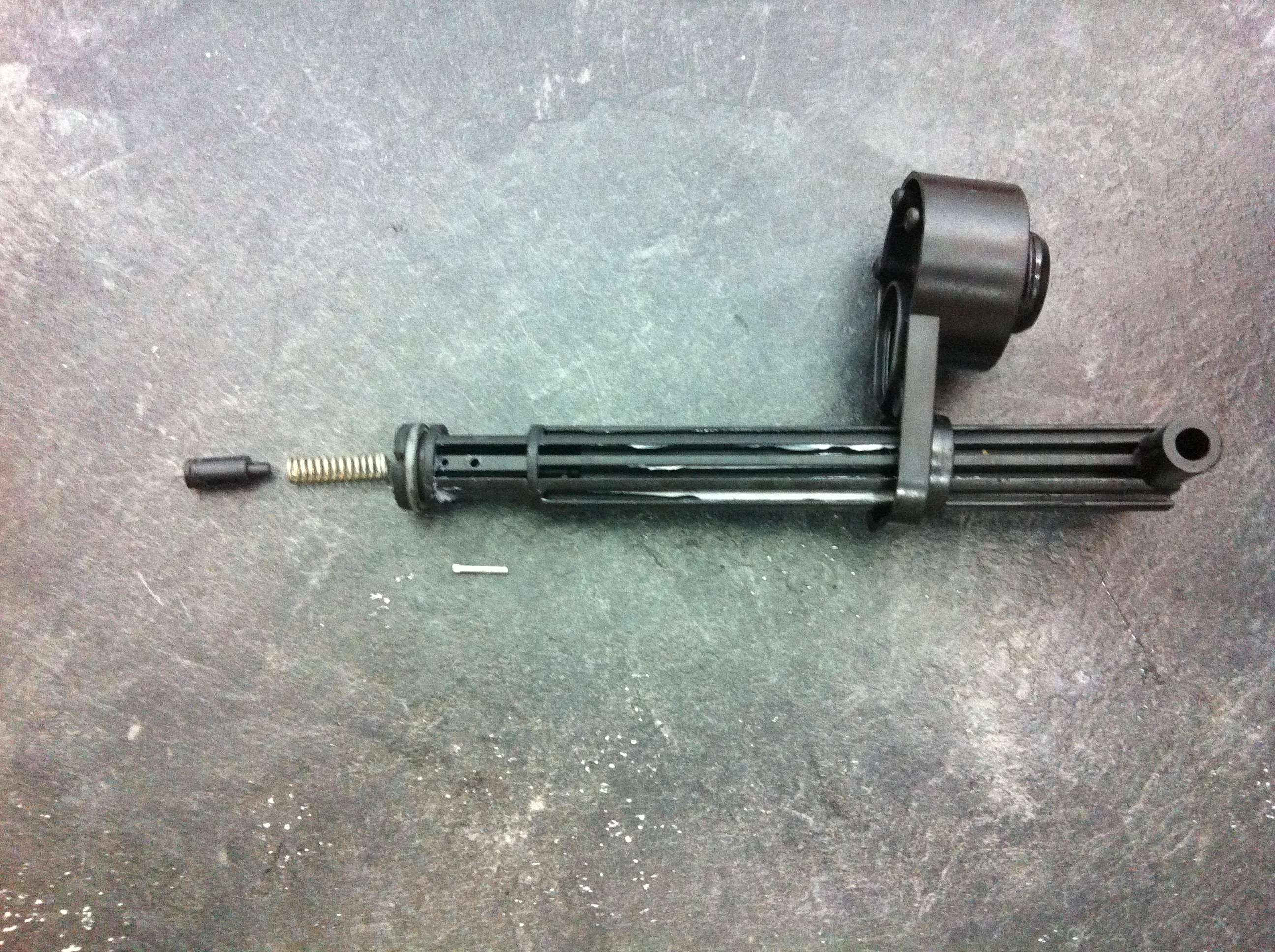
It's held in via a steal pin.
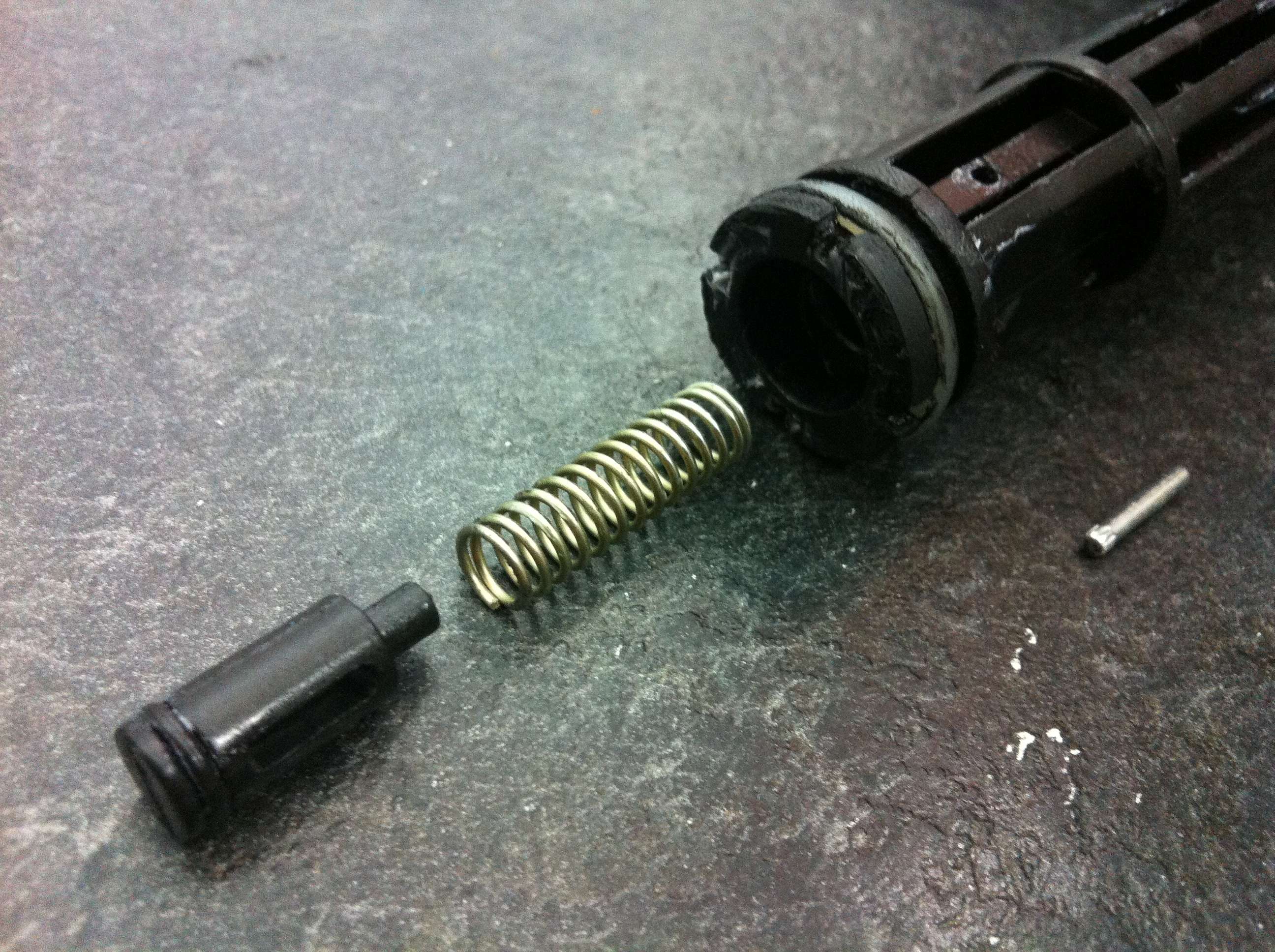
As you can see, it's pretty much the standard OPRV set up as any other popular air blaster.
Default stock OPRV is somewhere between 20psi or 25psi.
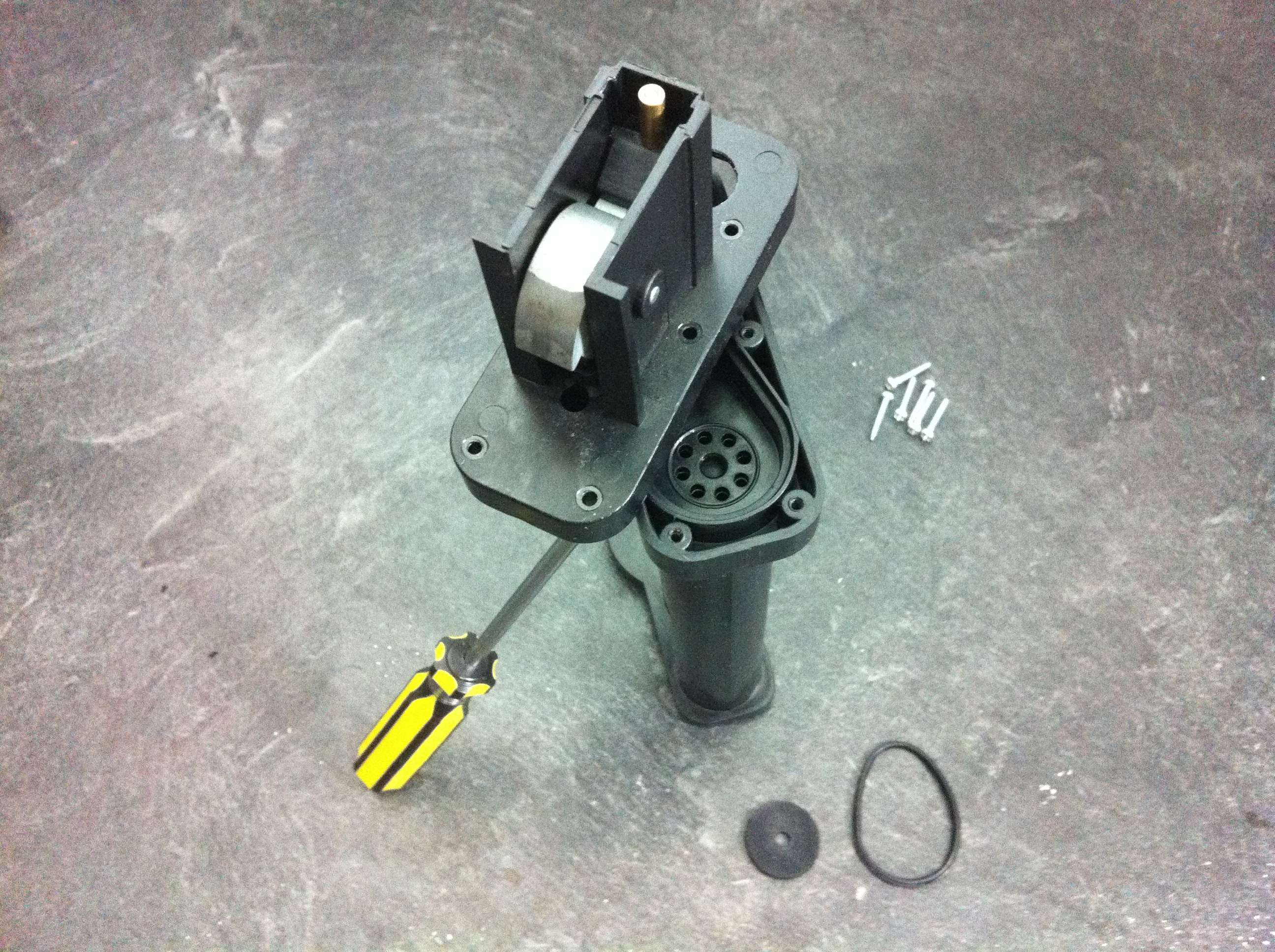
The back end doesn't quite fully come apart because the brass fitting of the firing pin keeps it from being separated. But simply lifting it gently and swivelling to the side allows adequate access.
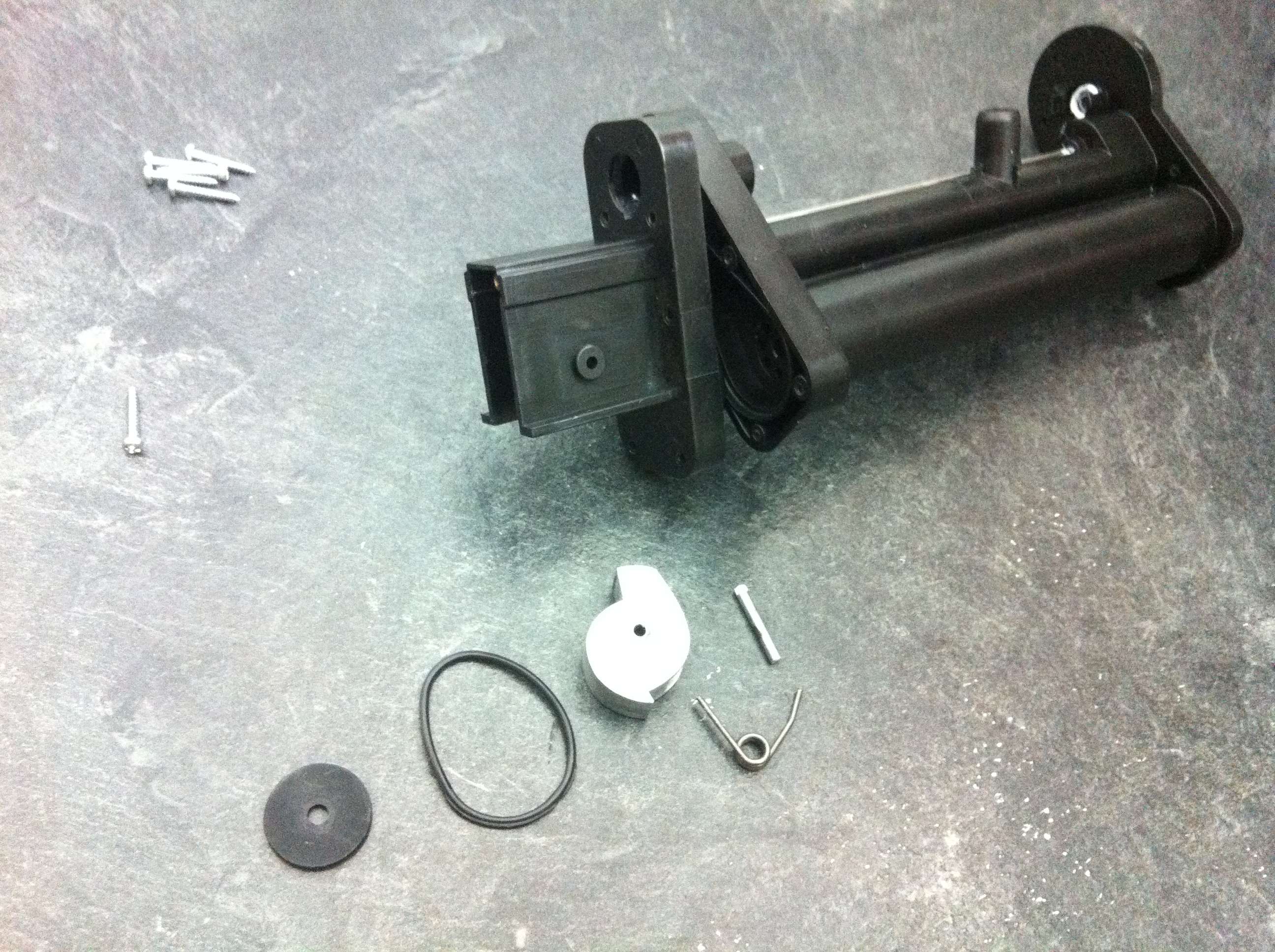
The pumps' check valve is a basic rubber washer with a rather large o-ring maintaining the seal.

The trigger/release mechanism is held in via another pin and is actuated by a rather strong torsion spring upon the trigger pull. The key to the 'semi-auto' capability is purely mechanical. The reason it is possible, is because the trigger/release mechanism snaps the air release valve open very quickly and seals it back up again just as quickly if not quicker.
*There is no air pressure regulator that controls the volume of air flow. It merely just opens and closes very quickly. The nature of the trigger/release mechanism does not allow for an extended trigger pull and therefore limits the volume of air release.
As long as the OPRV is set to optimum pressure release (or just left stock), a tank expansion or relocation will not make this blaster unsafe for wars. A tank expansion would simply only allow for more semi auto shots before having to re-pump. Although, a tank expansion also means a lot more pumps. It already takes roughly 45 pumps for the tank to fill and the OPRV to be activated to get 4 or 5 primary worthy shots. 10 or 11 are possible in total but after the 5th shot, power and ranges decrease exponentially.
Putting this thing back together is actually relatively easy.









